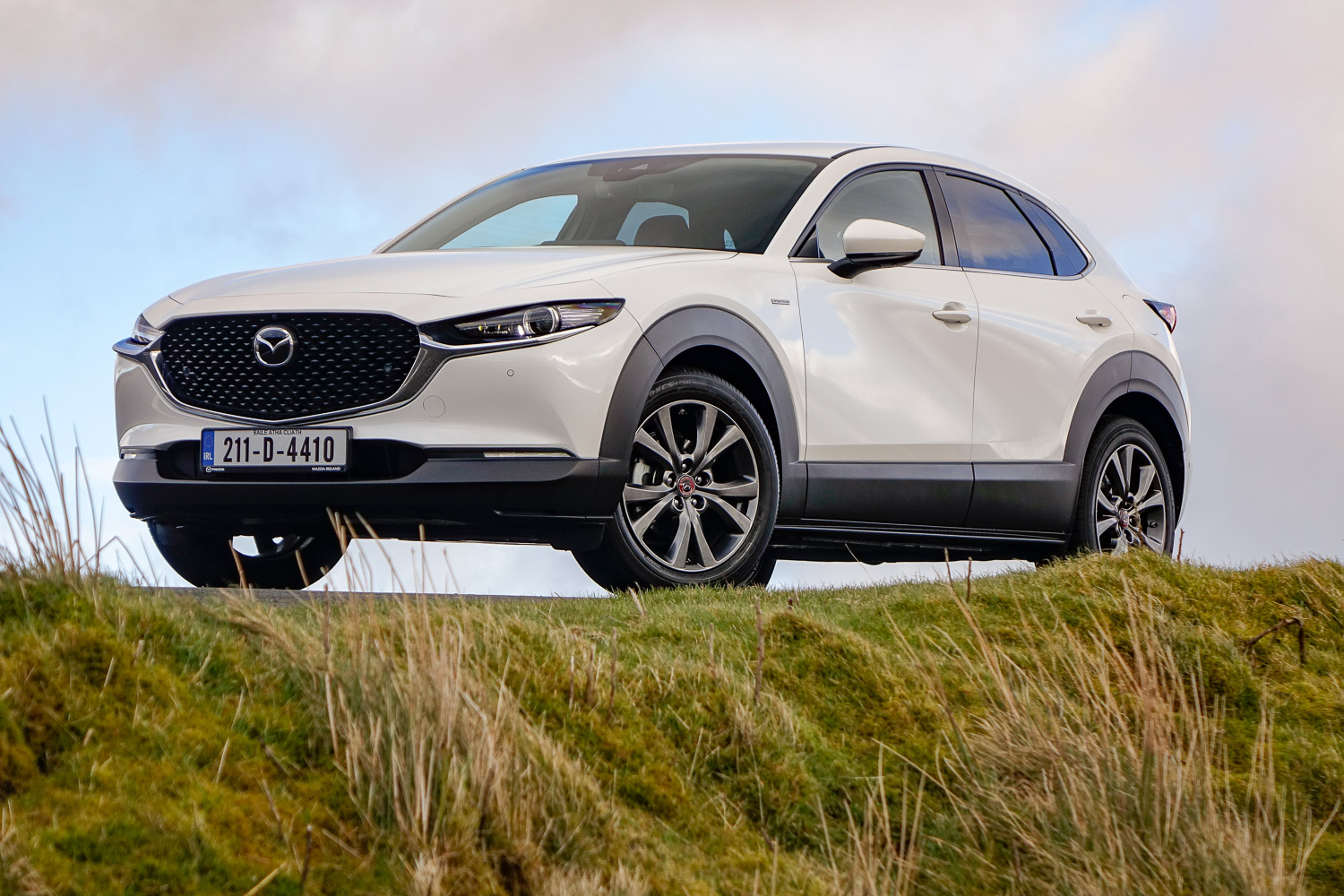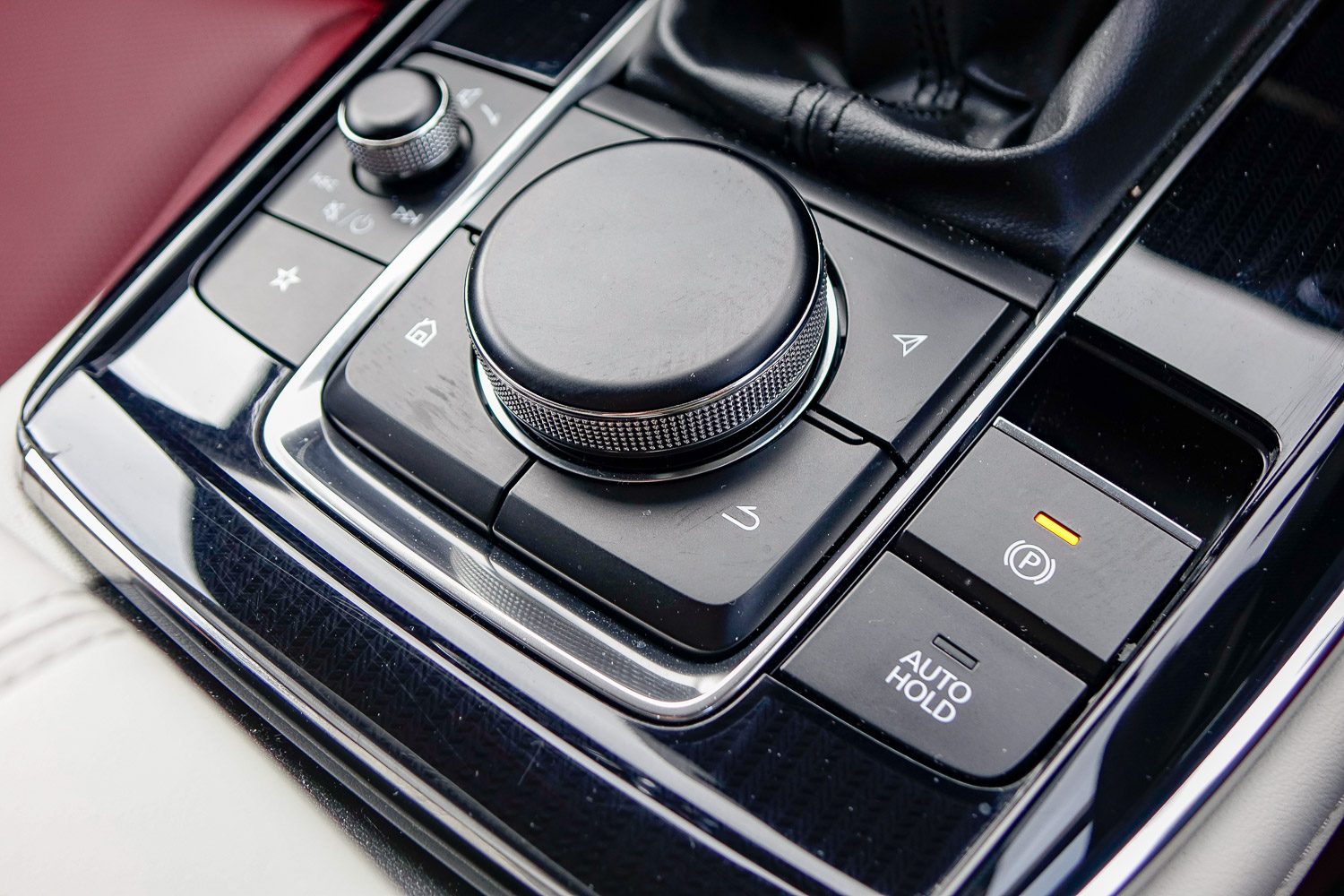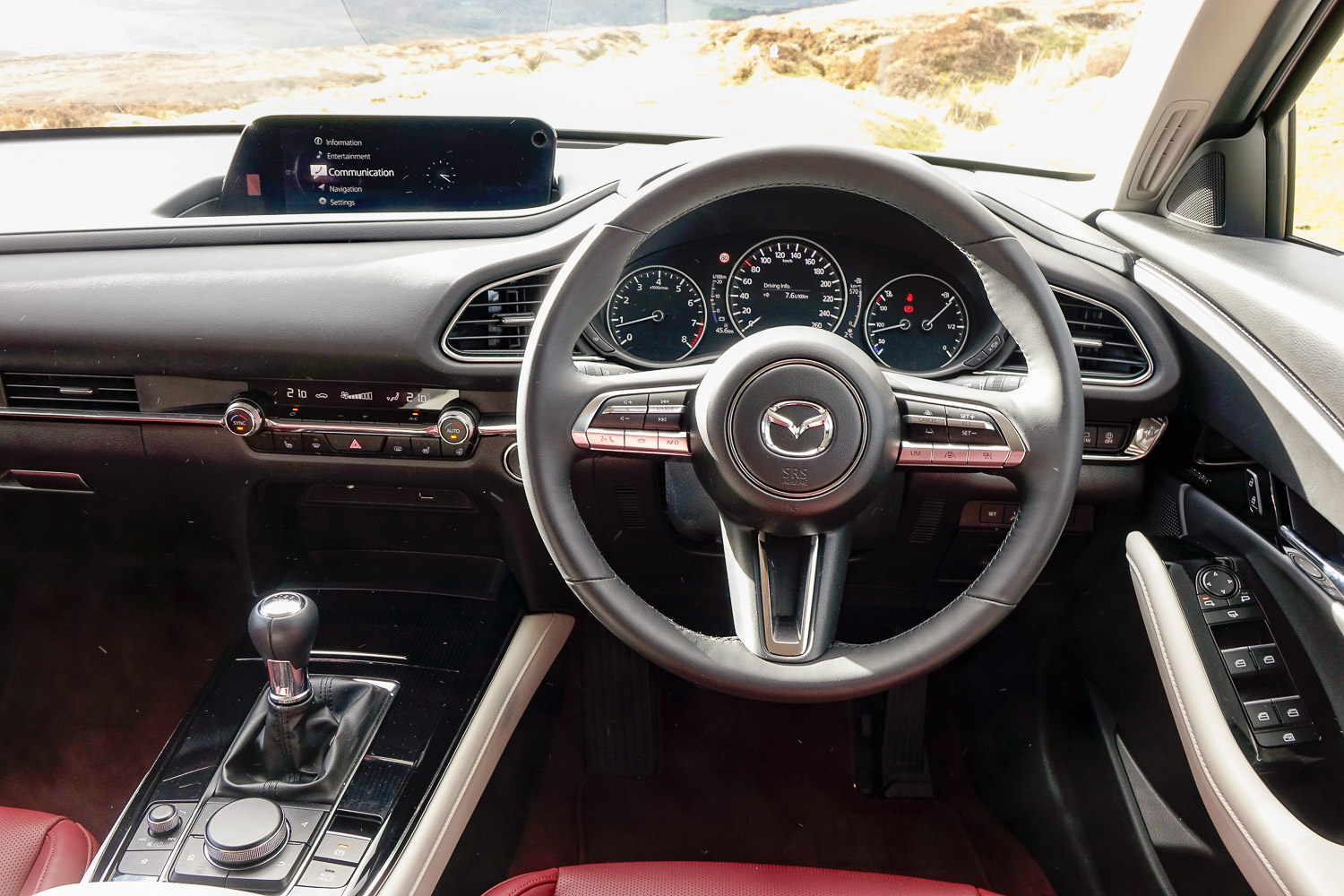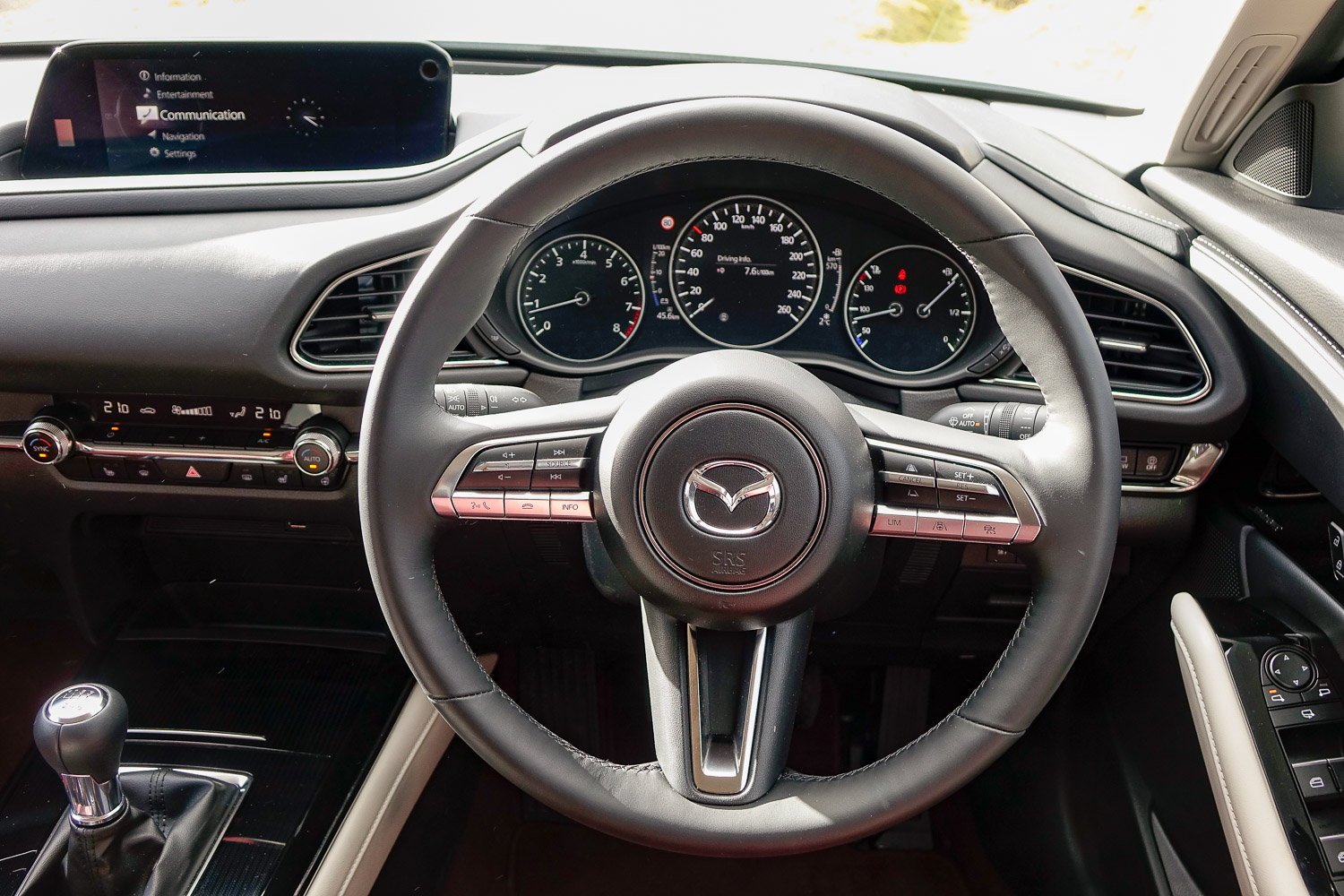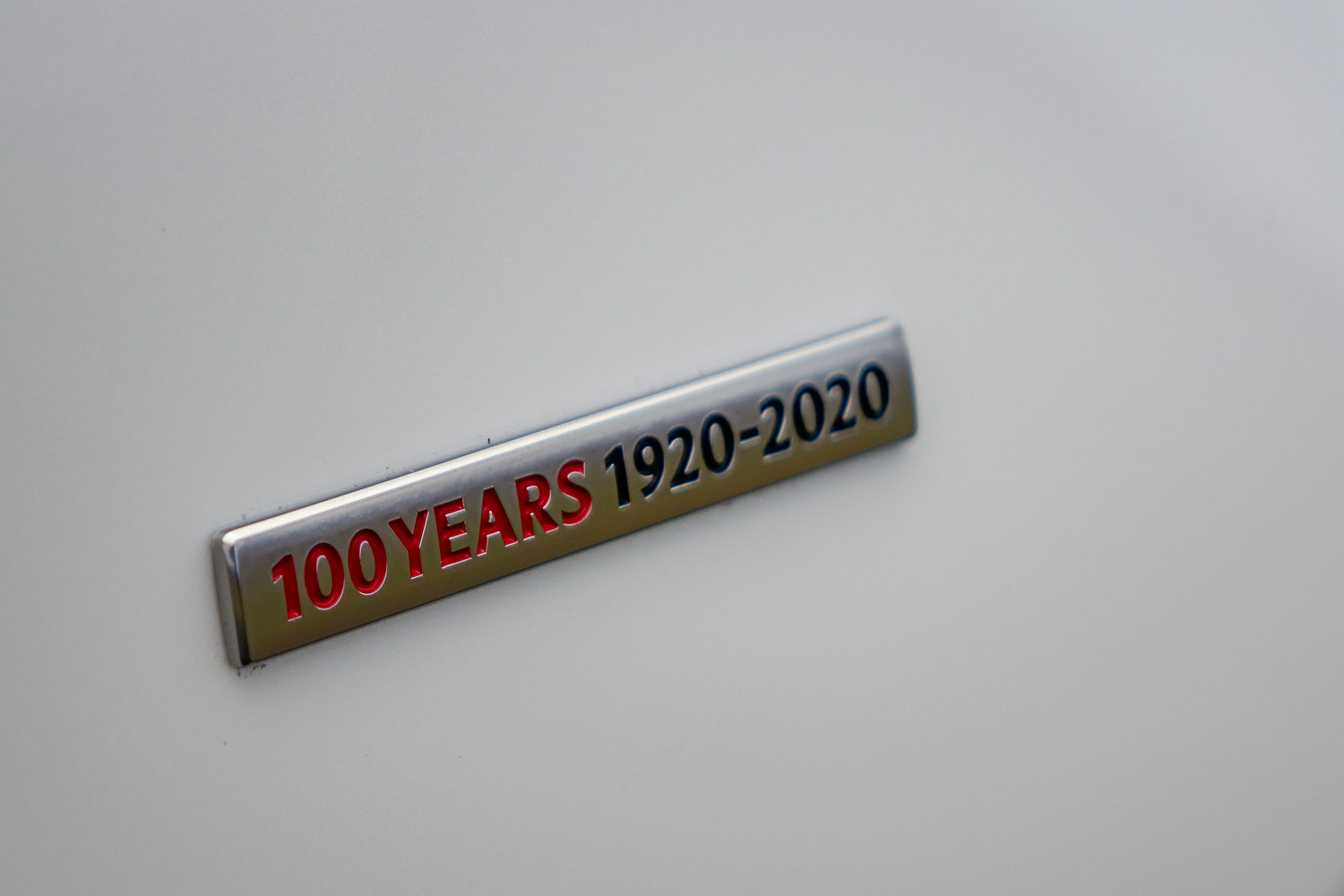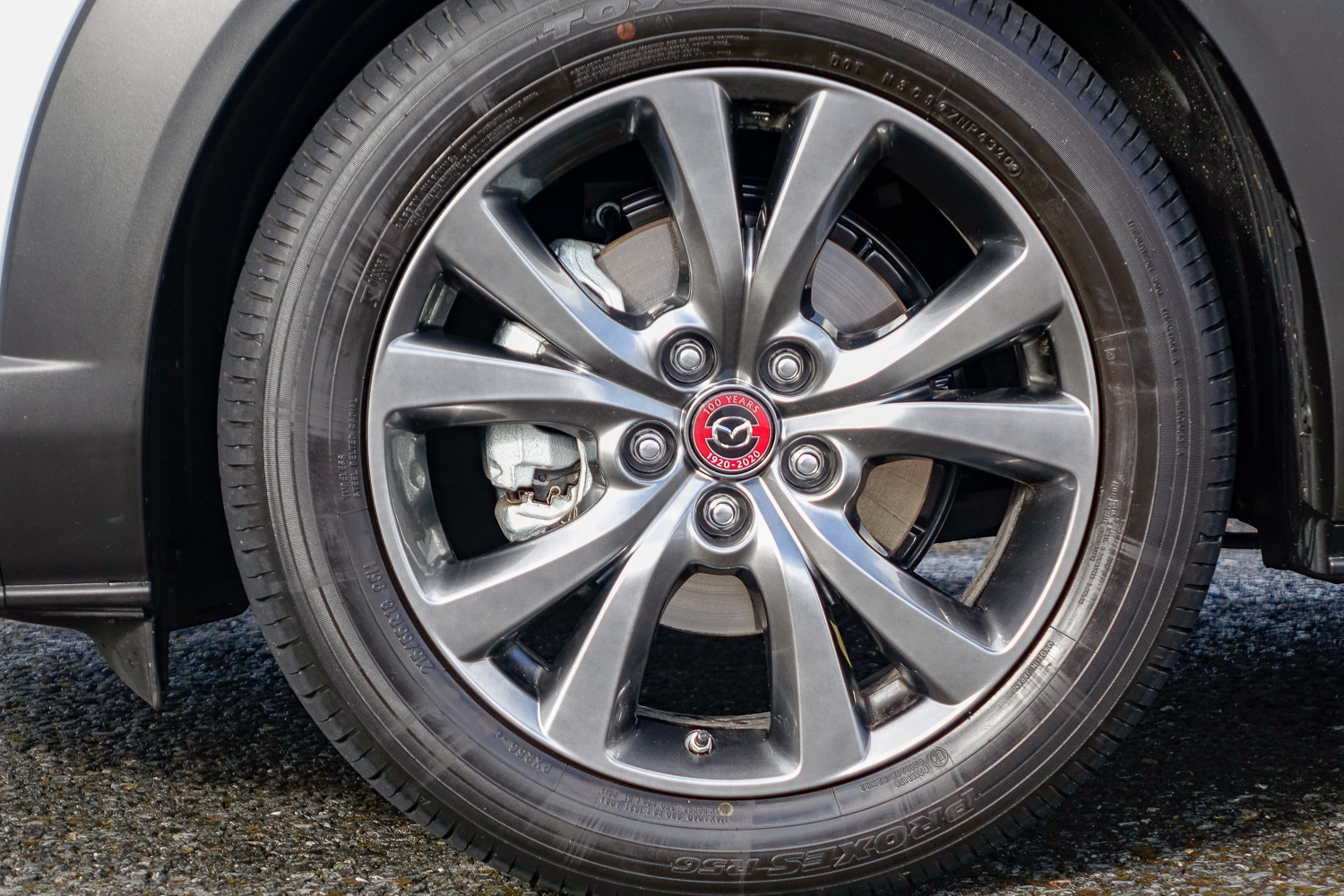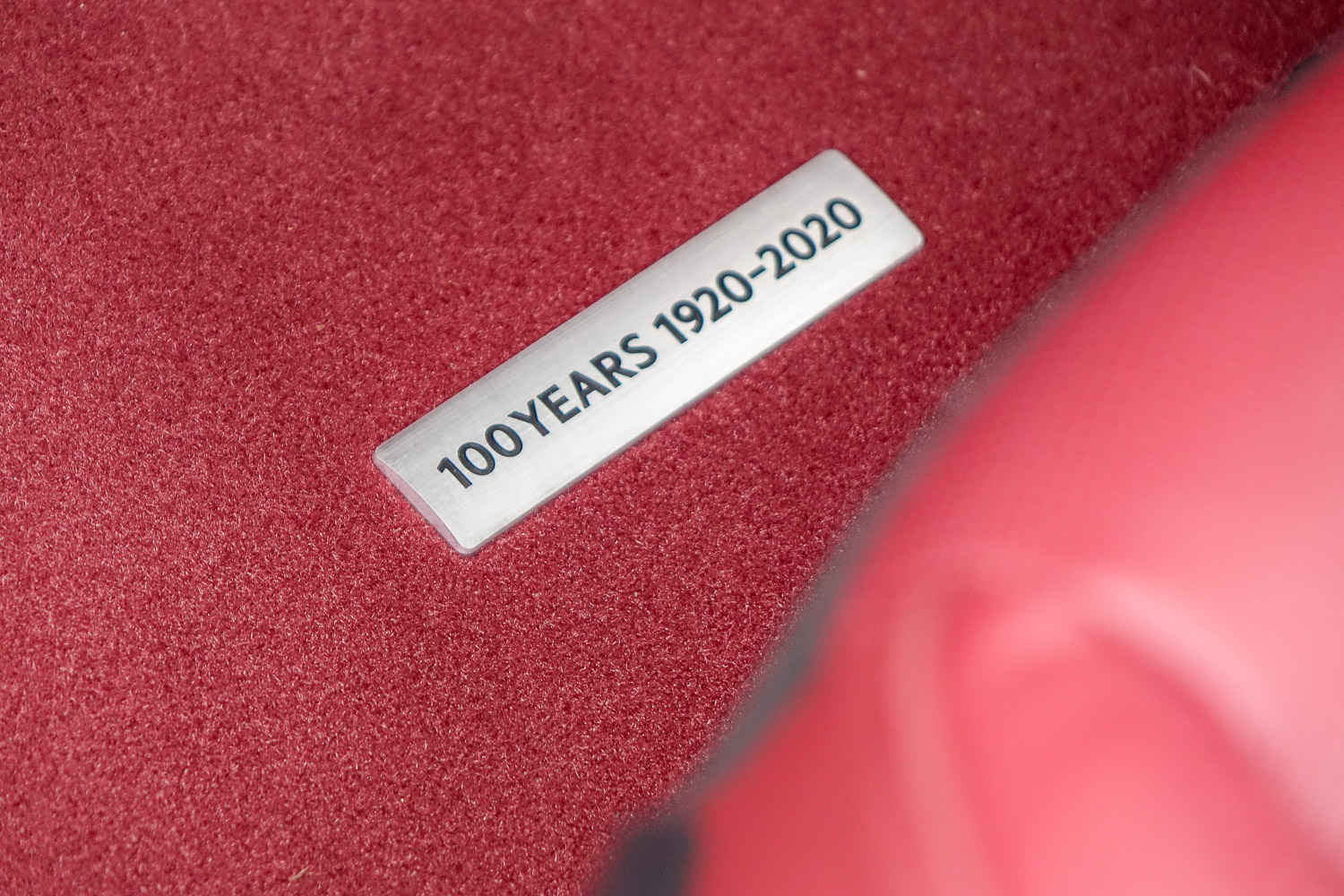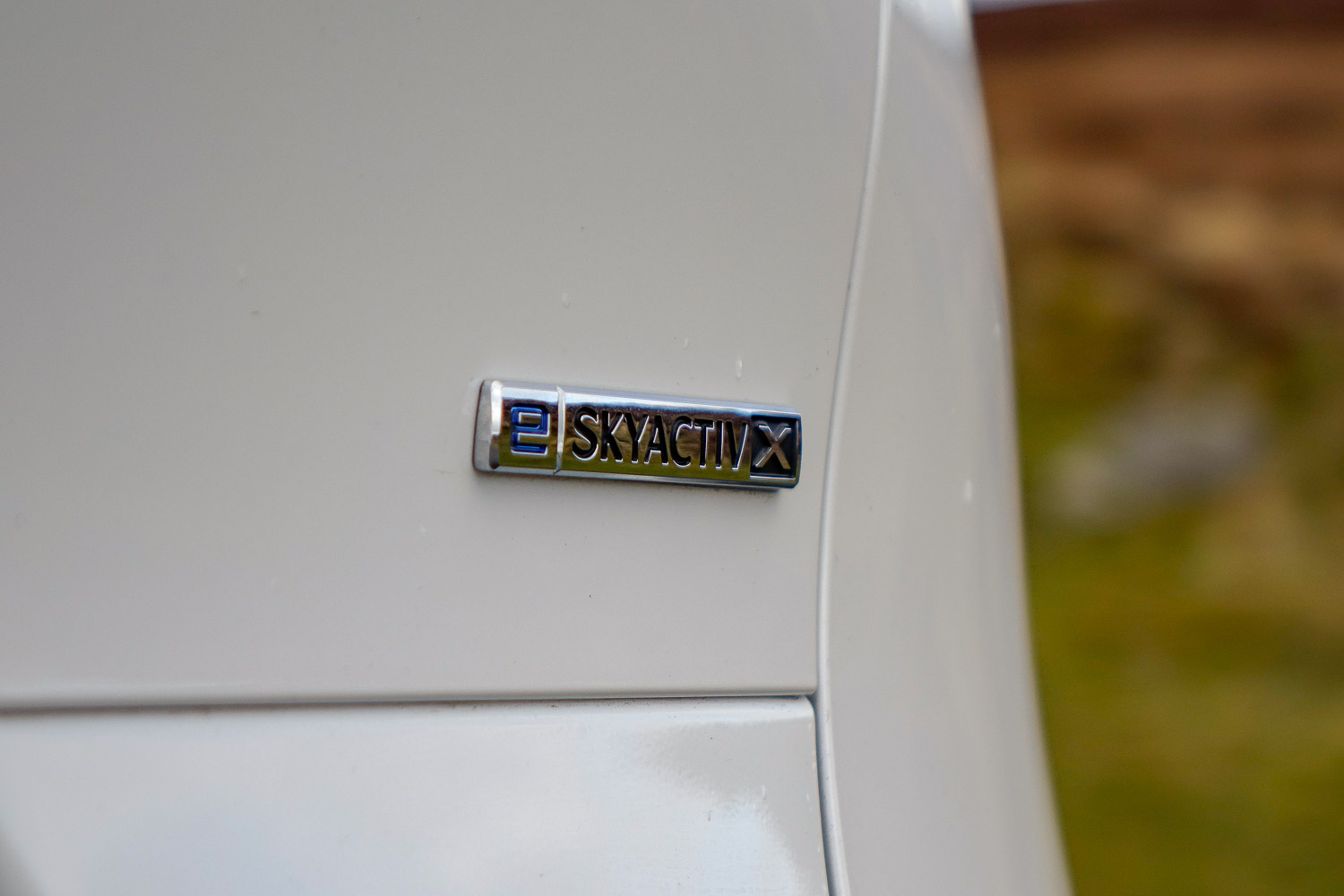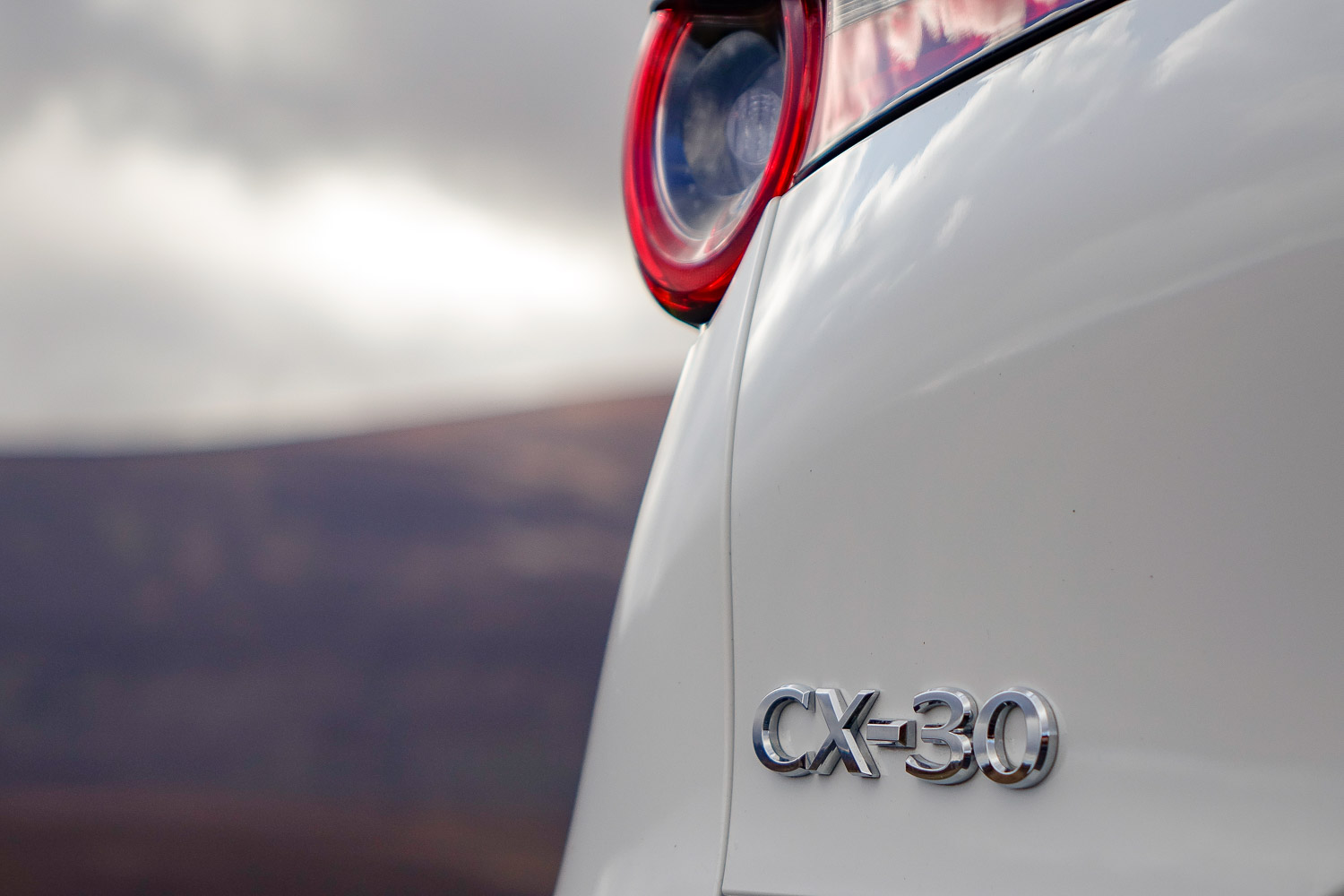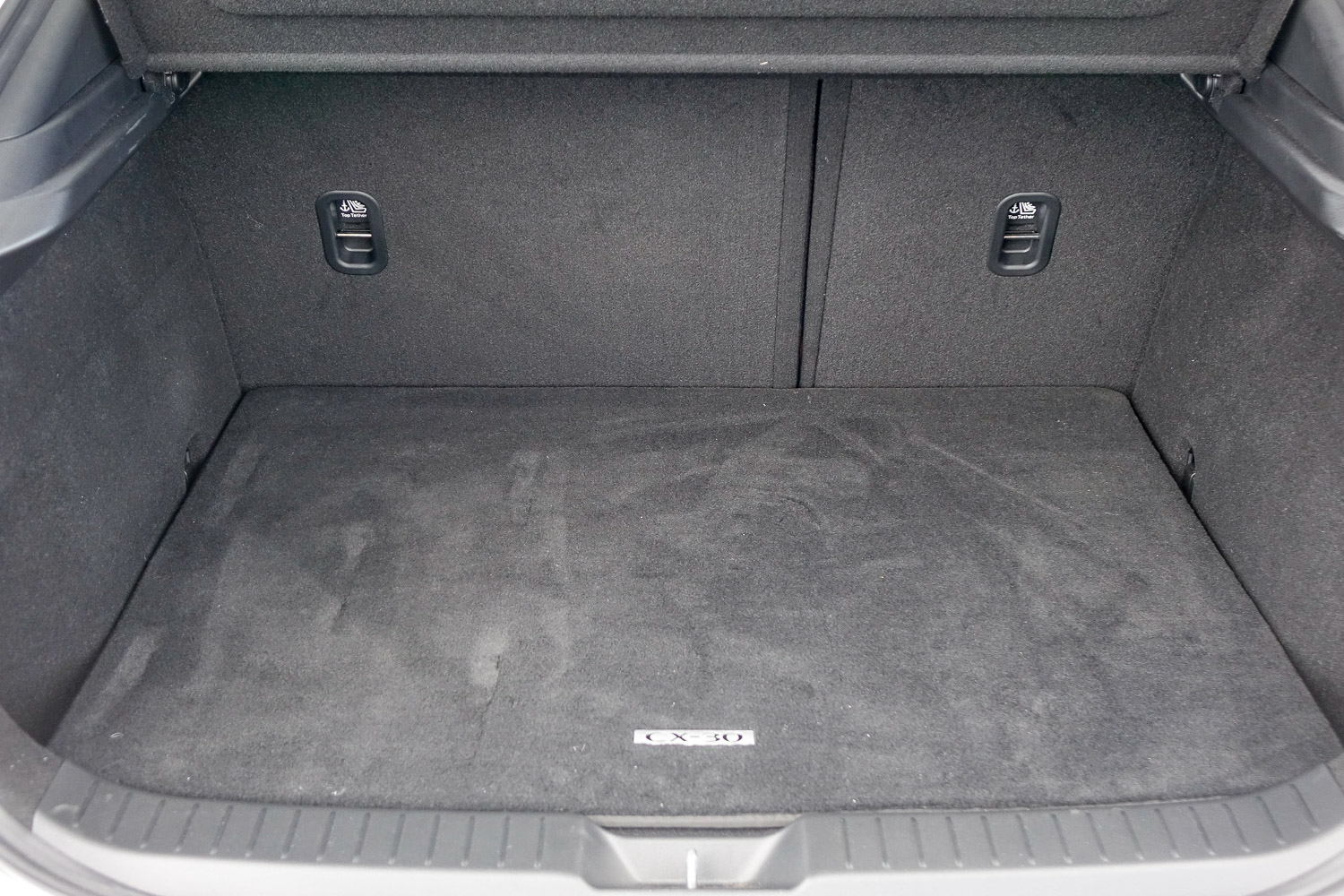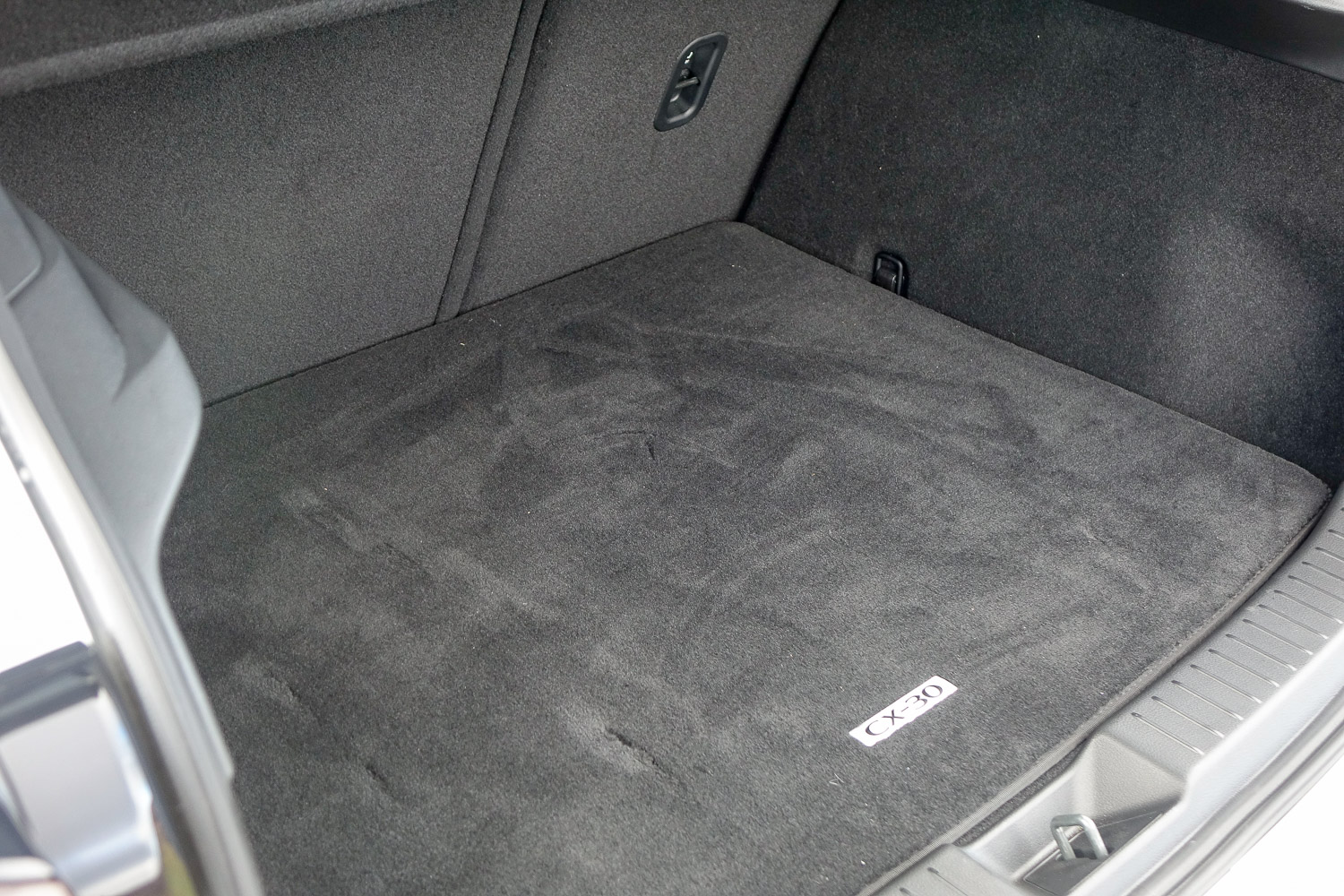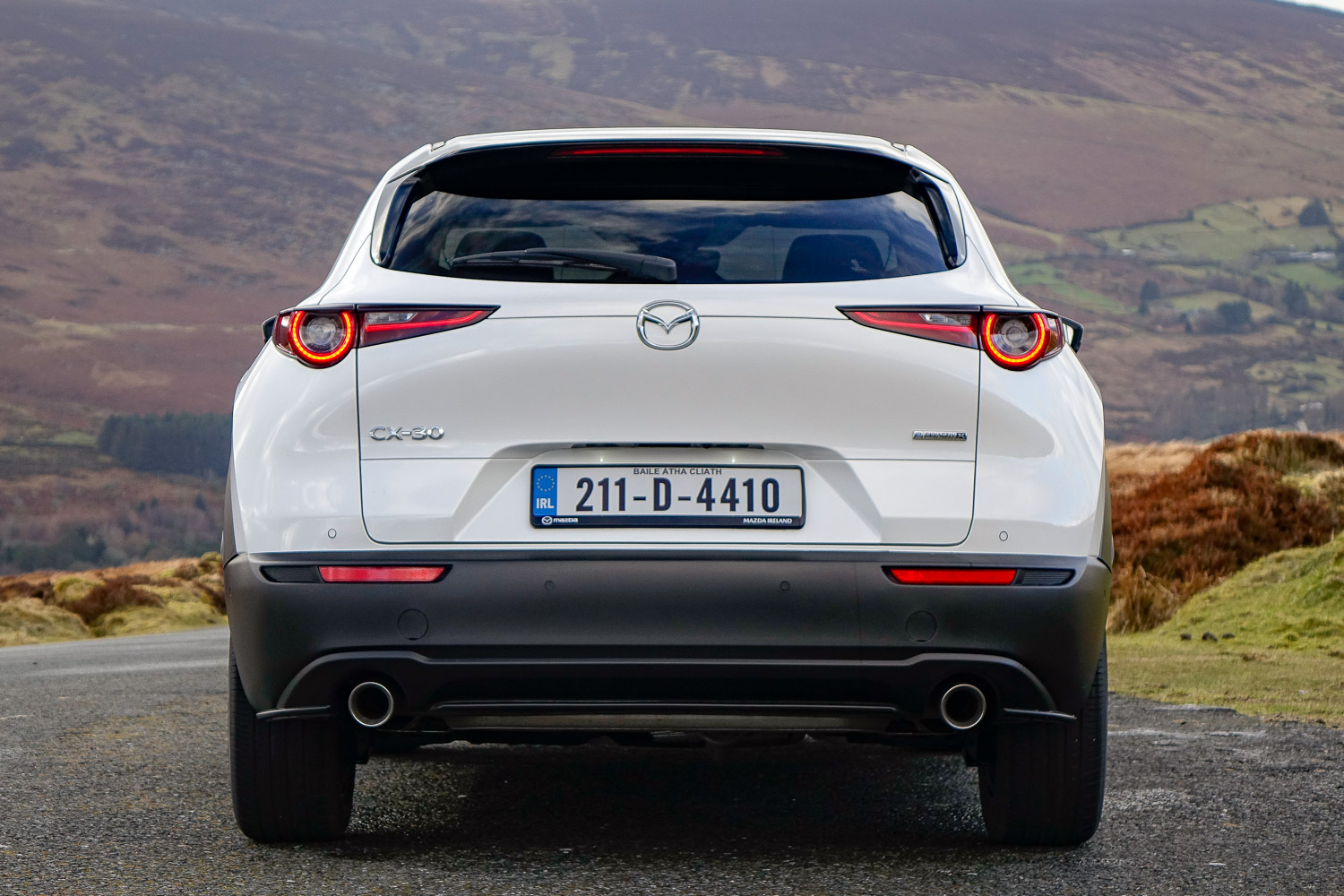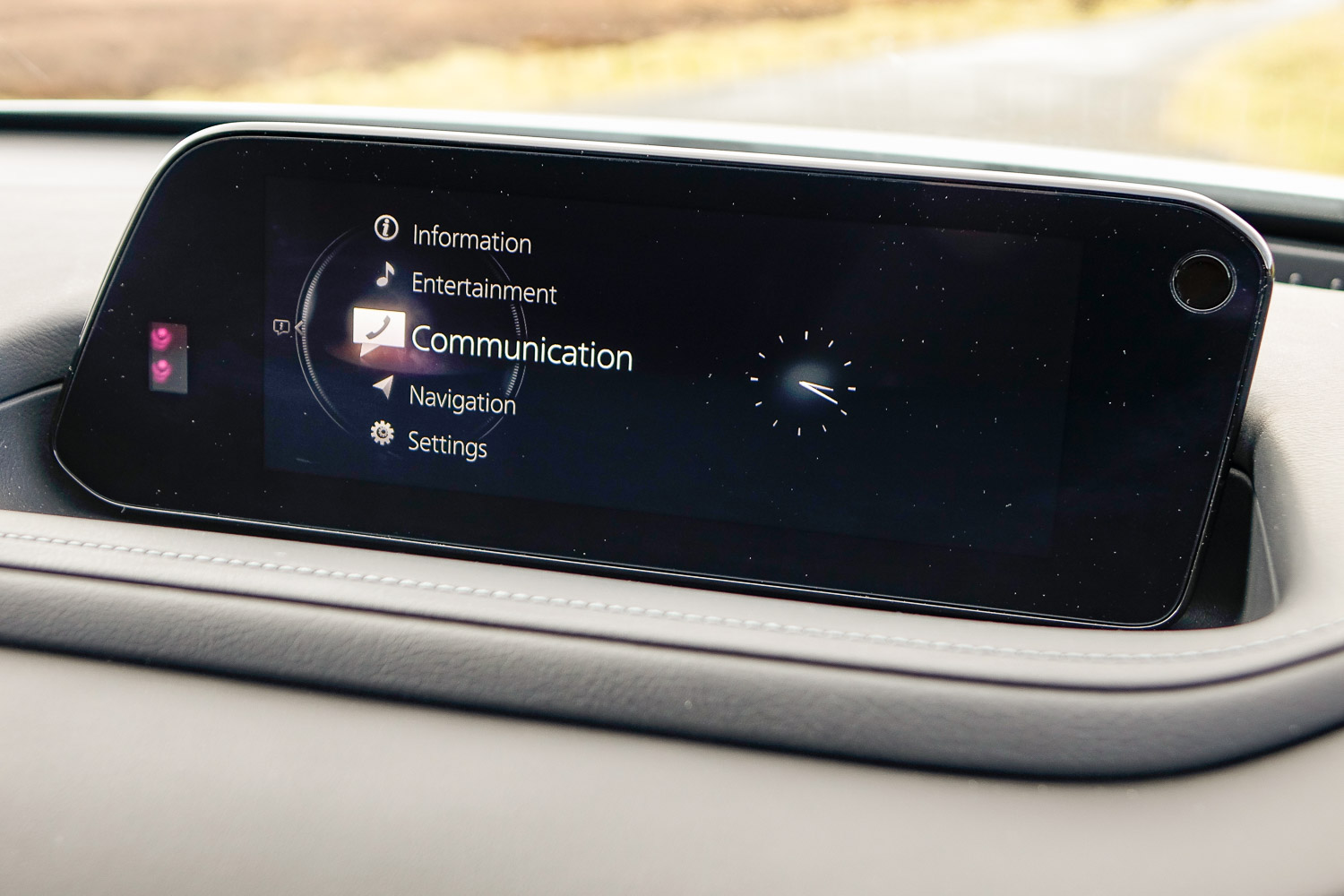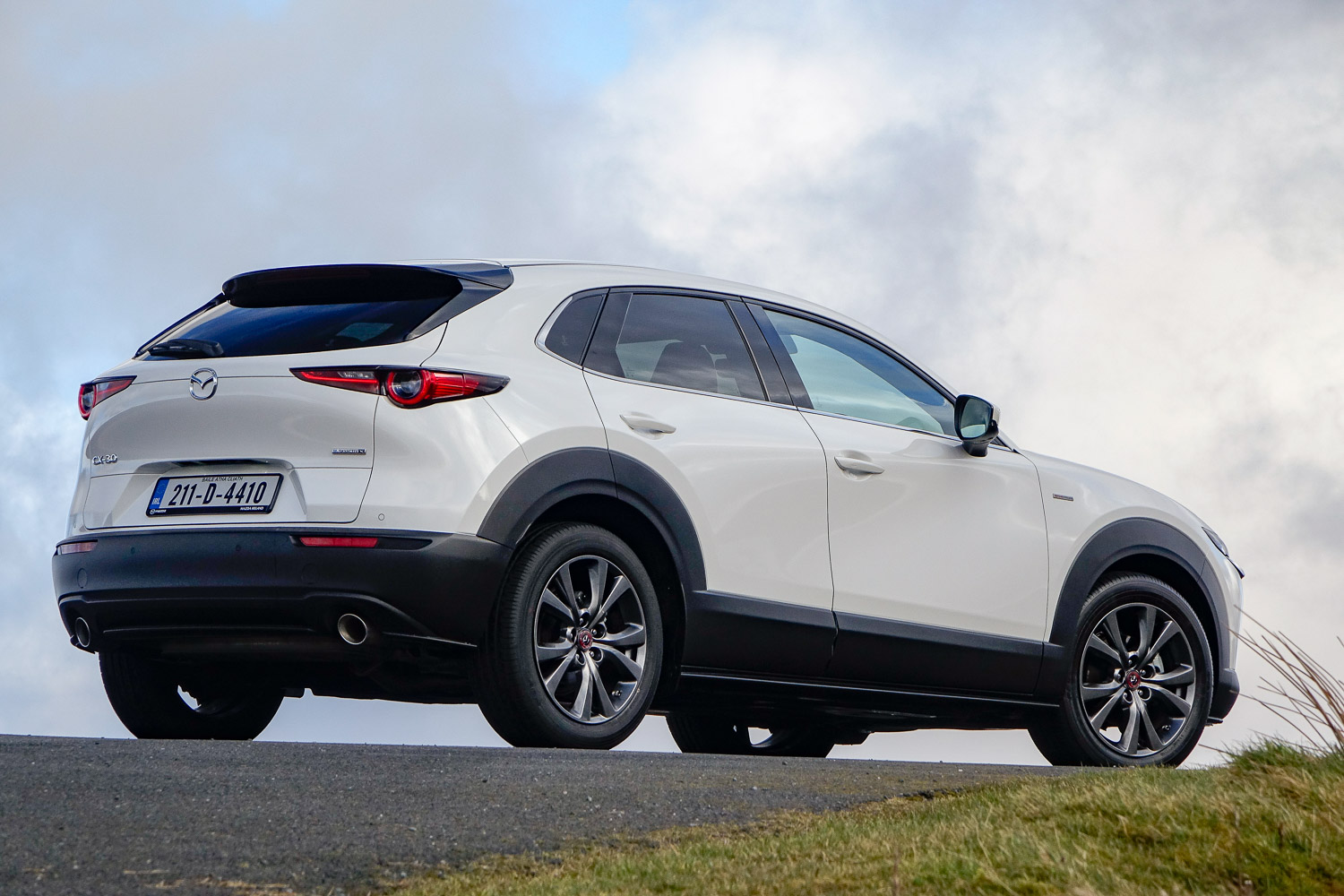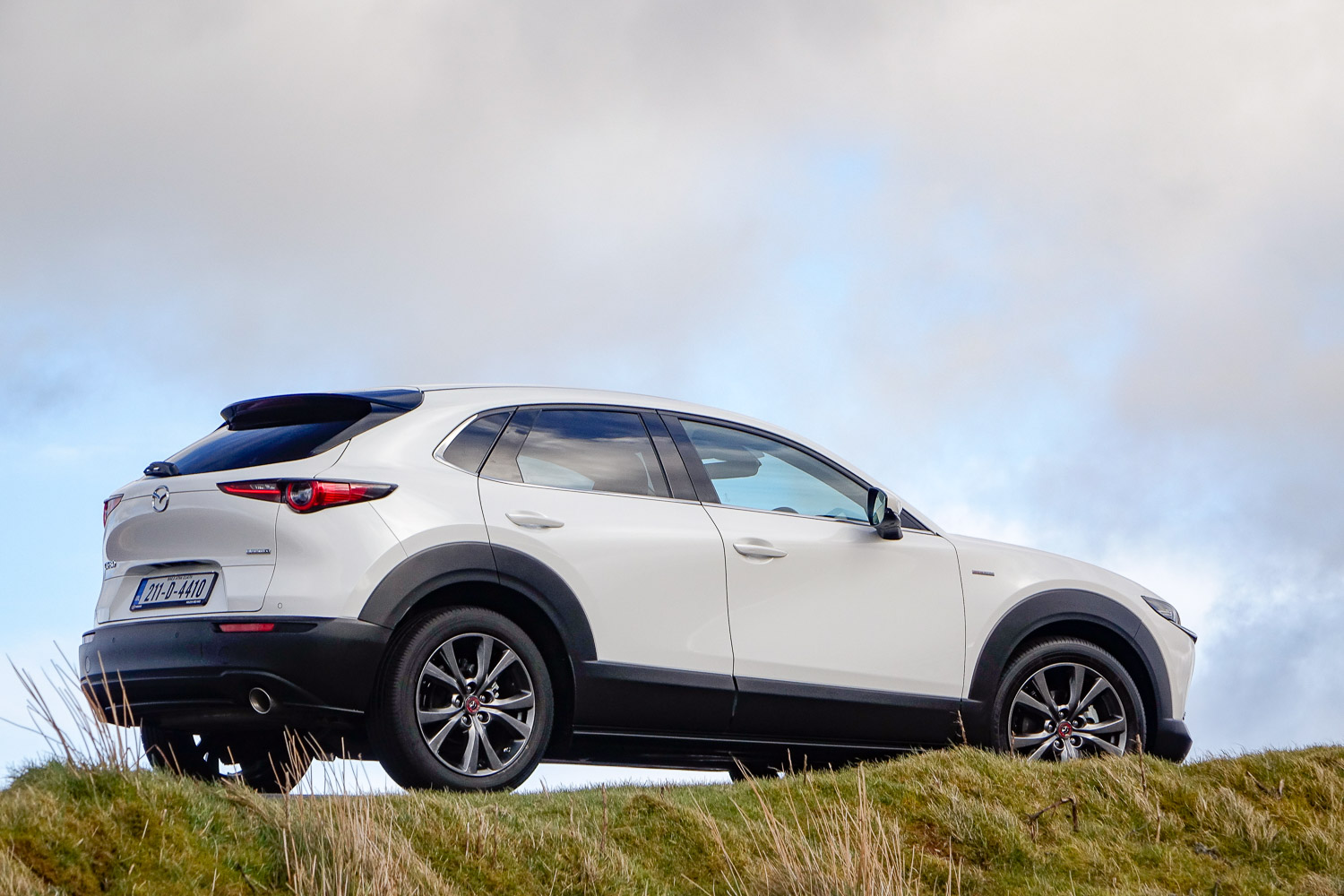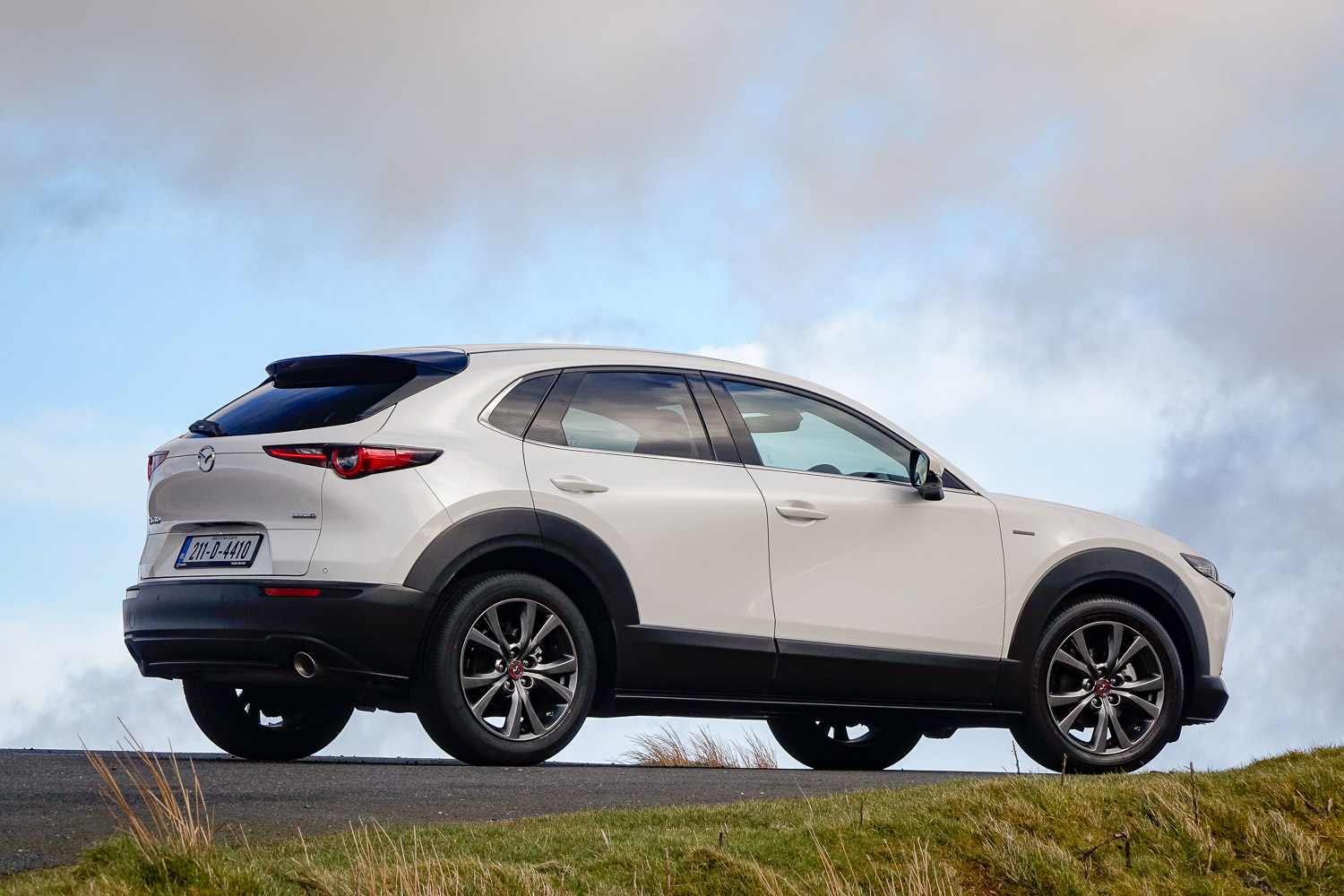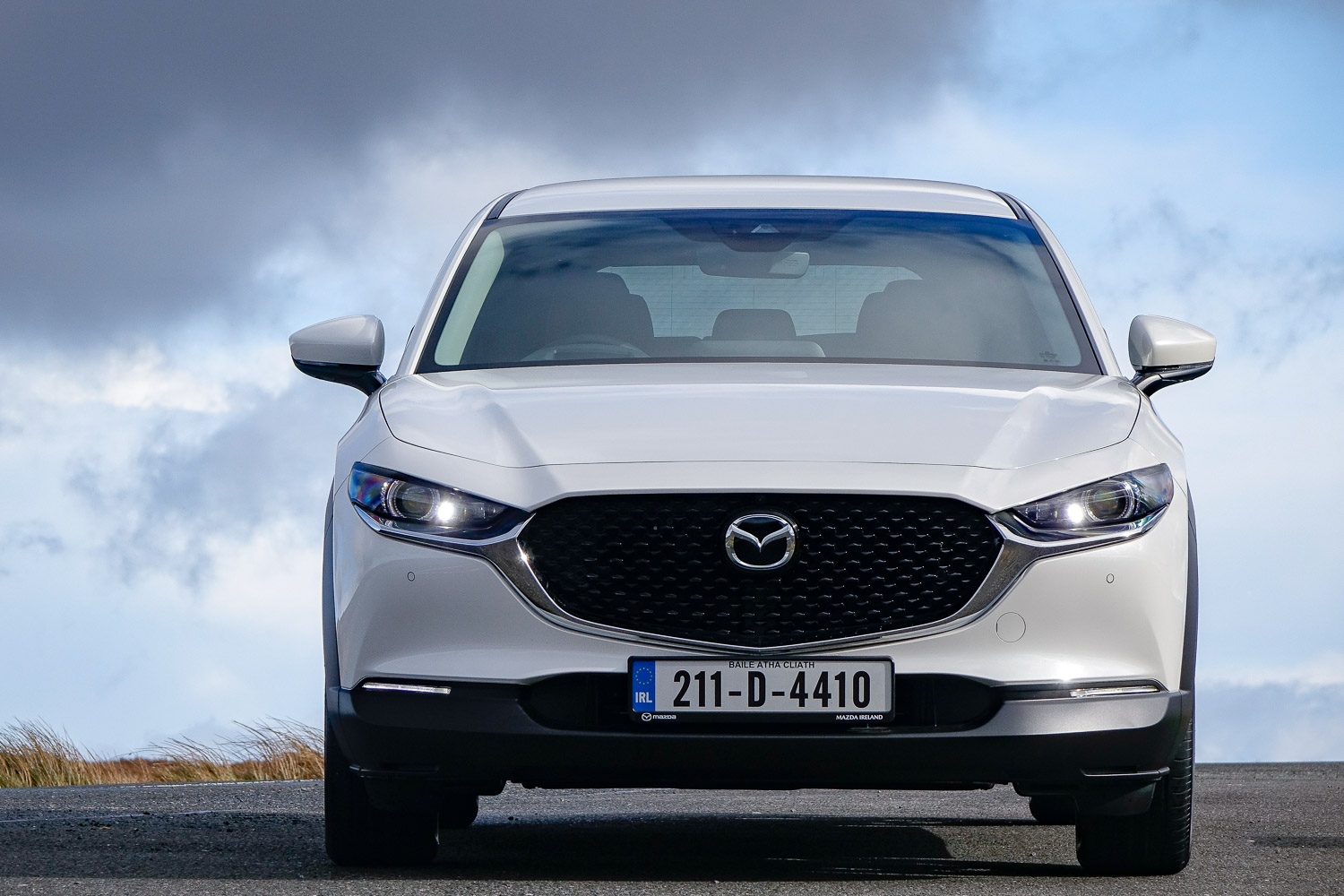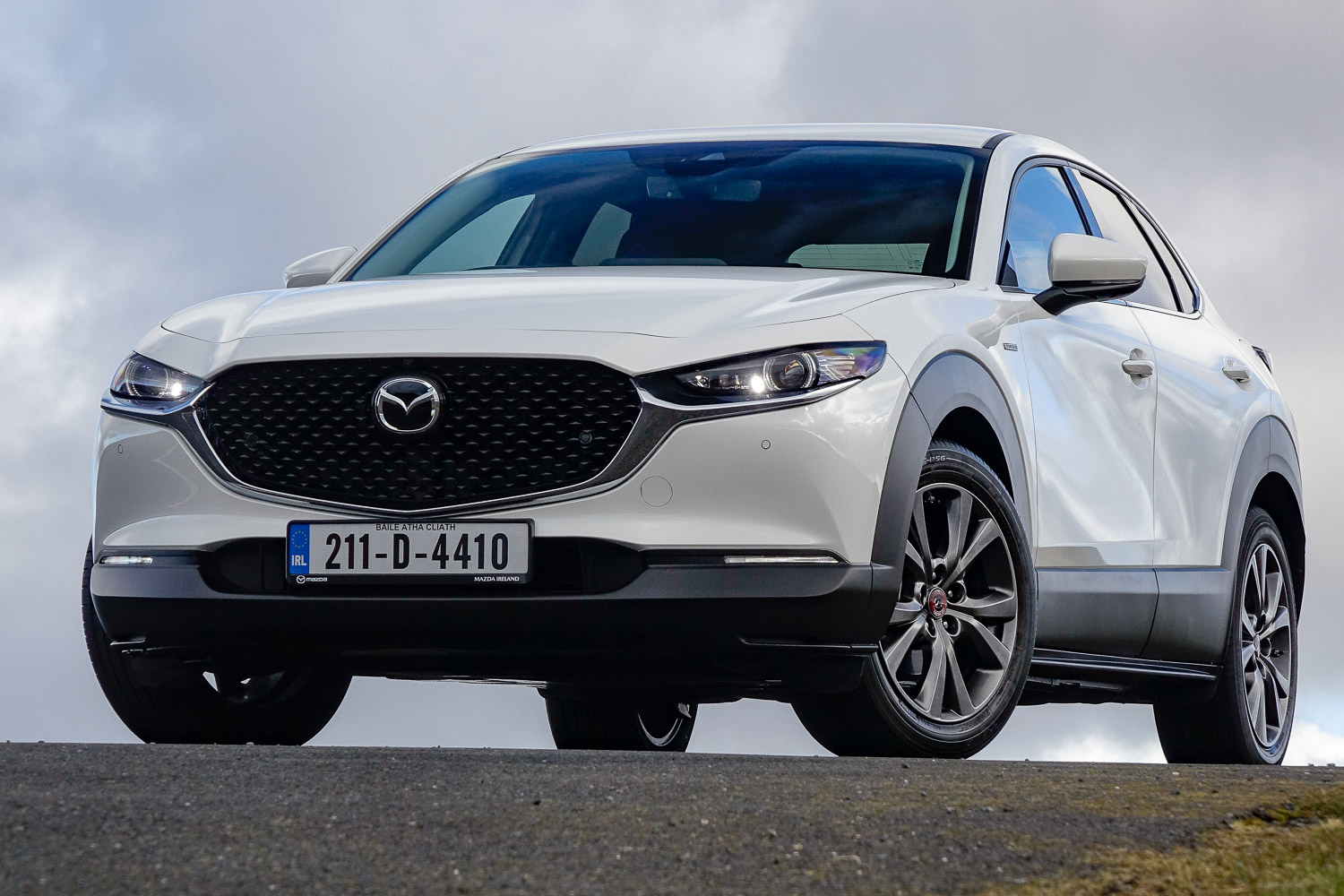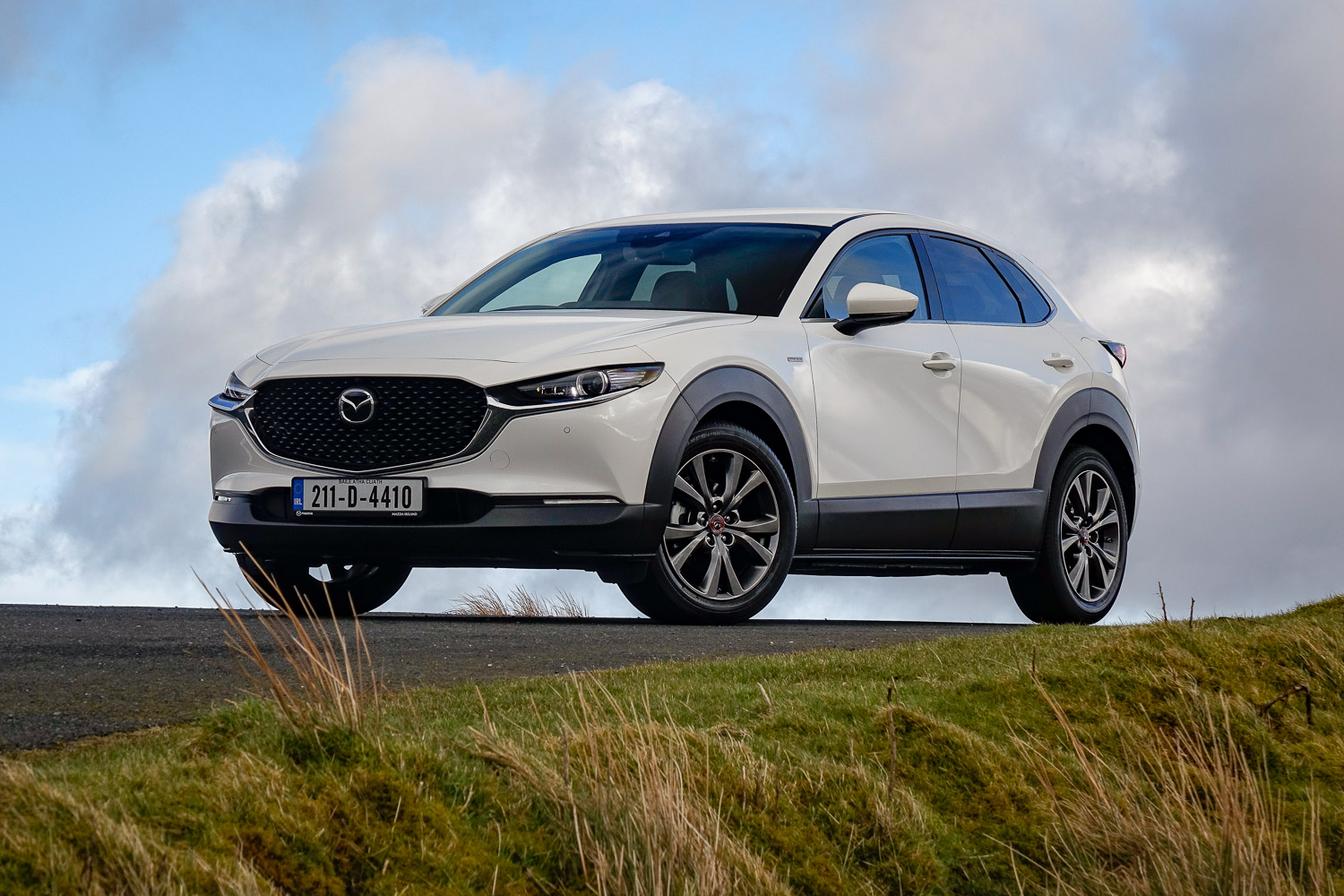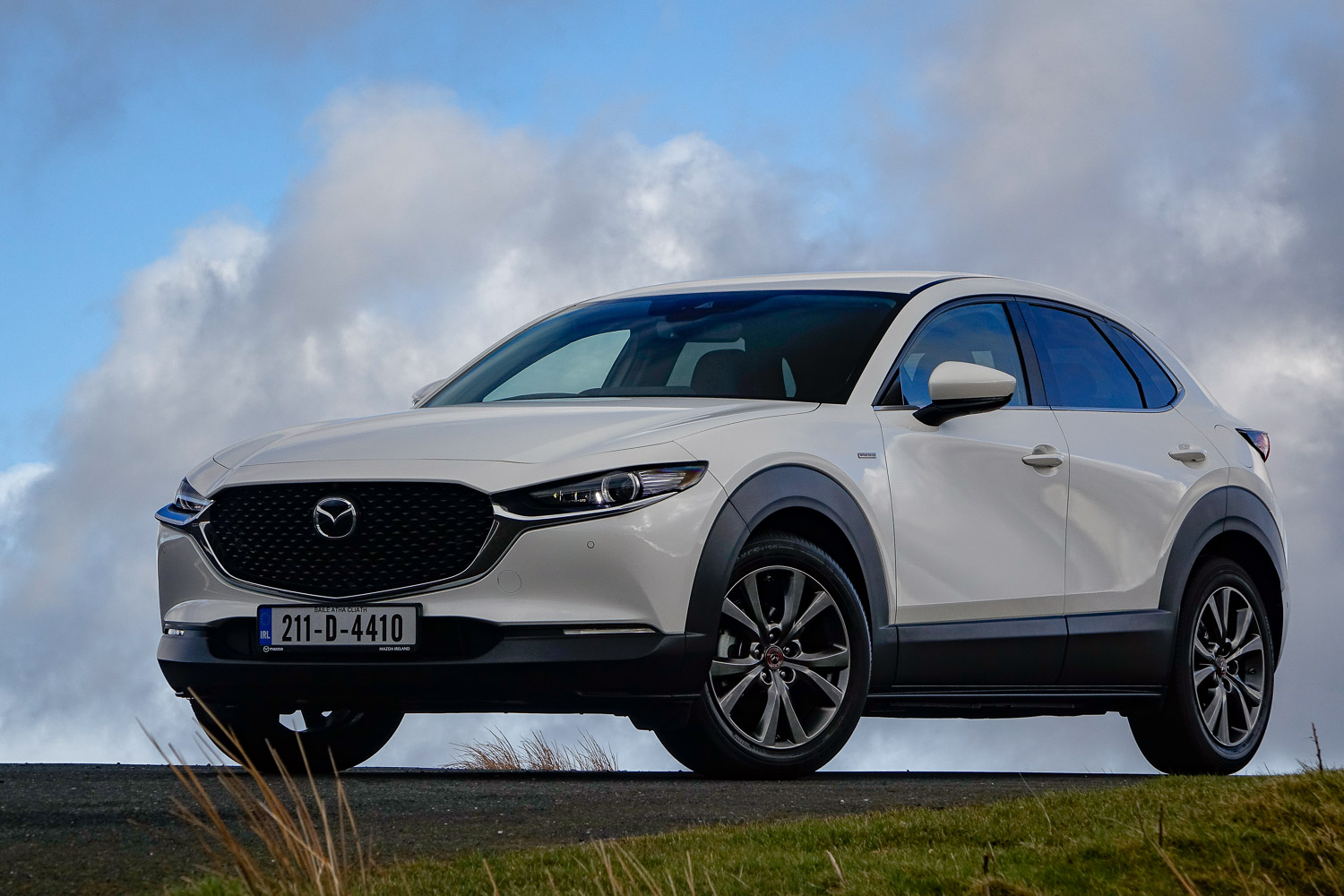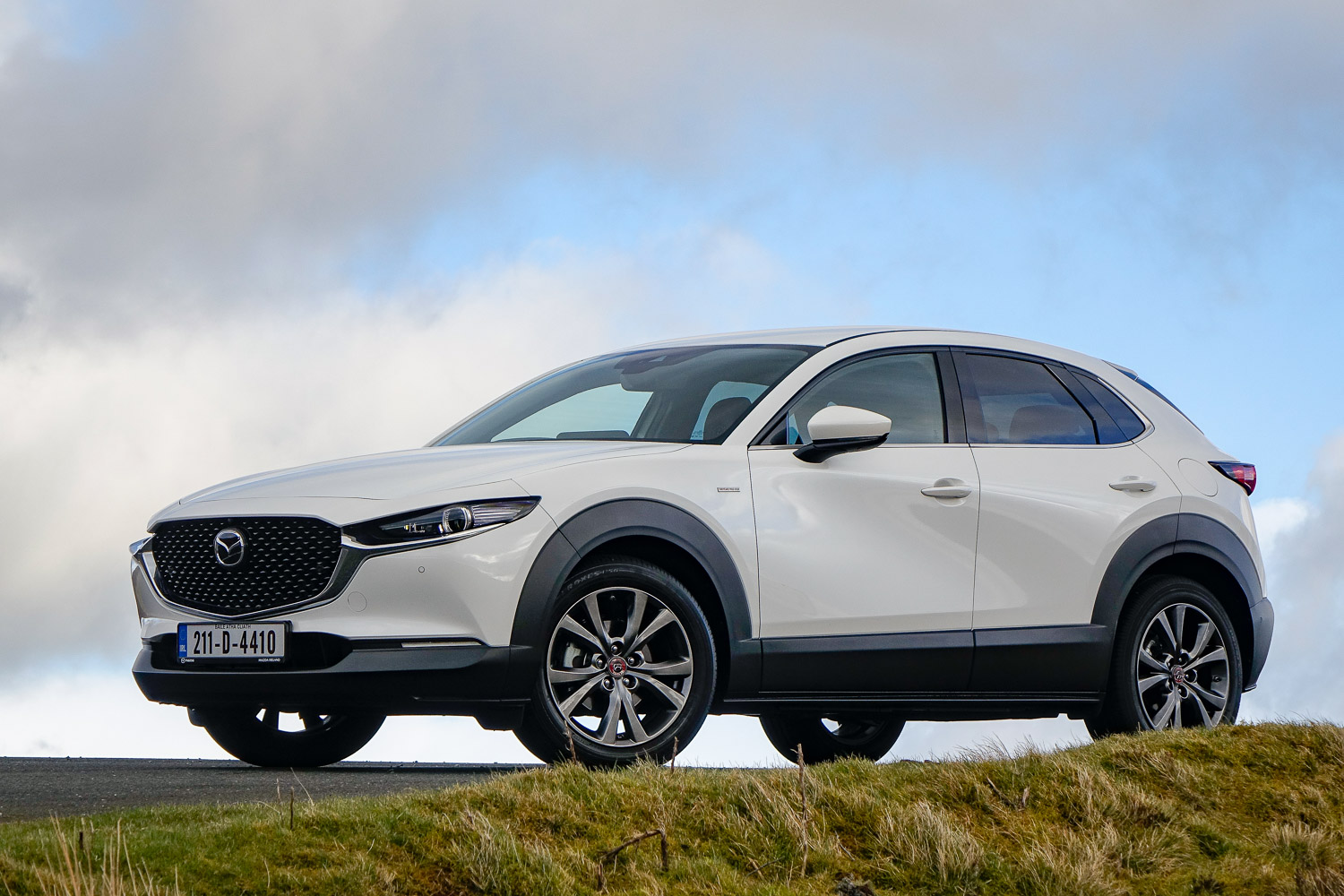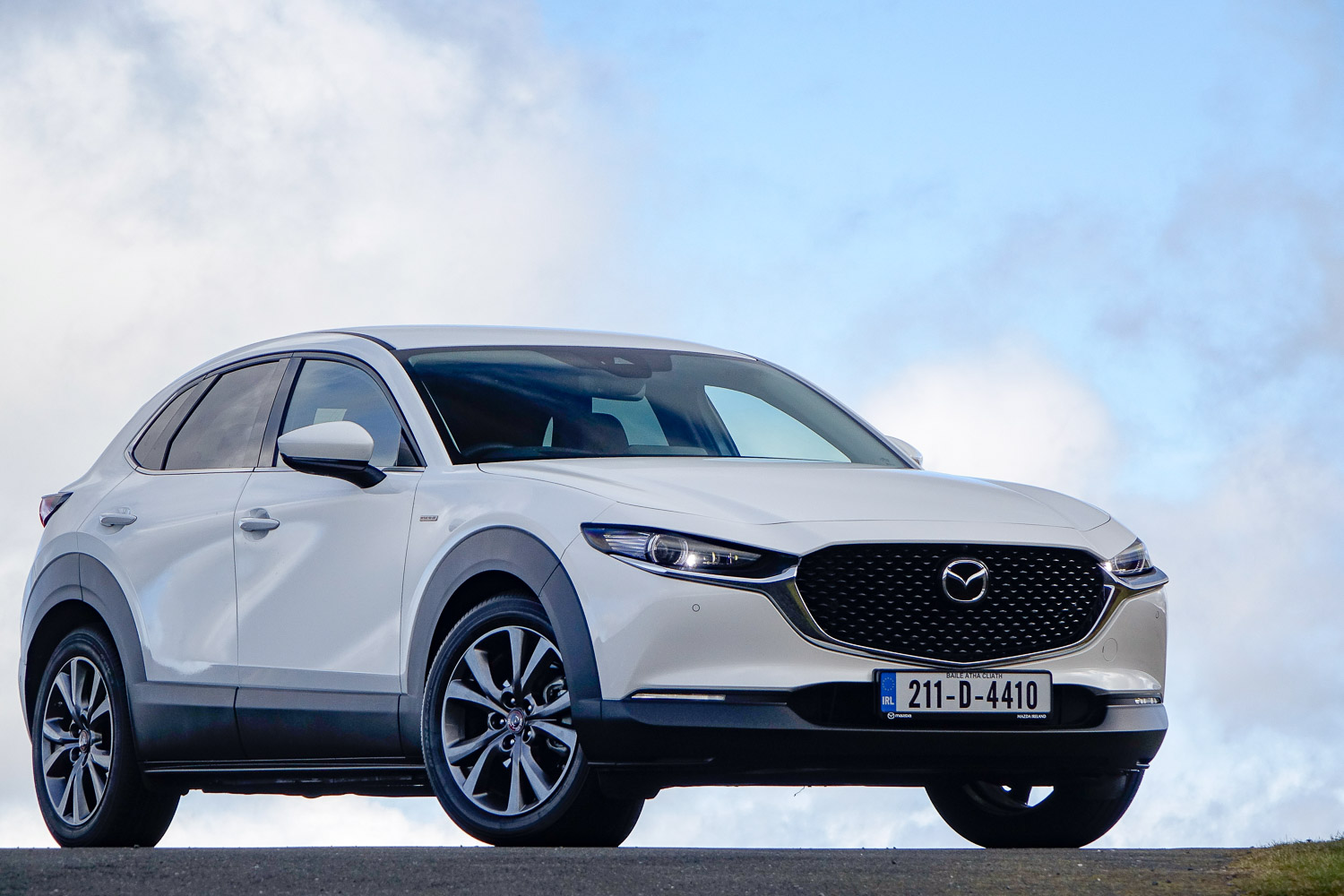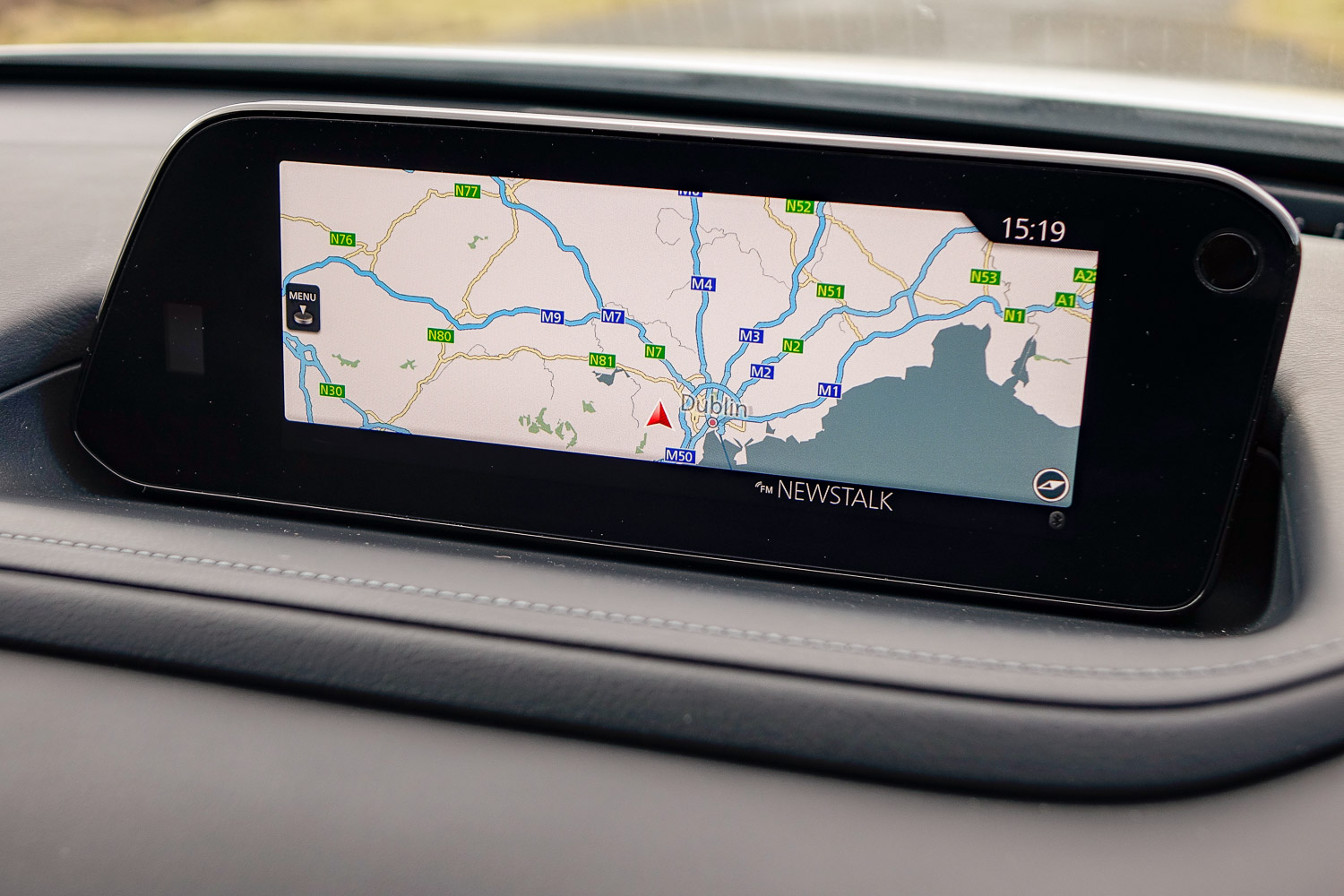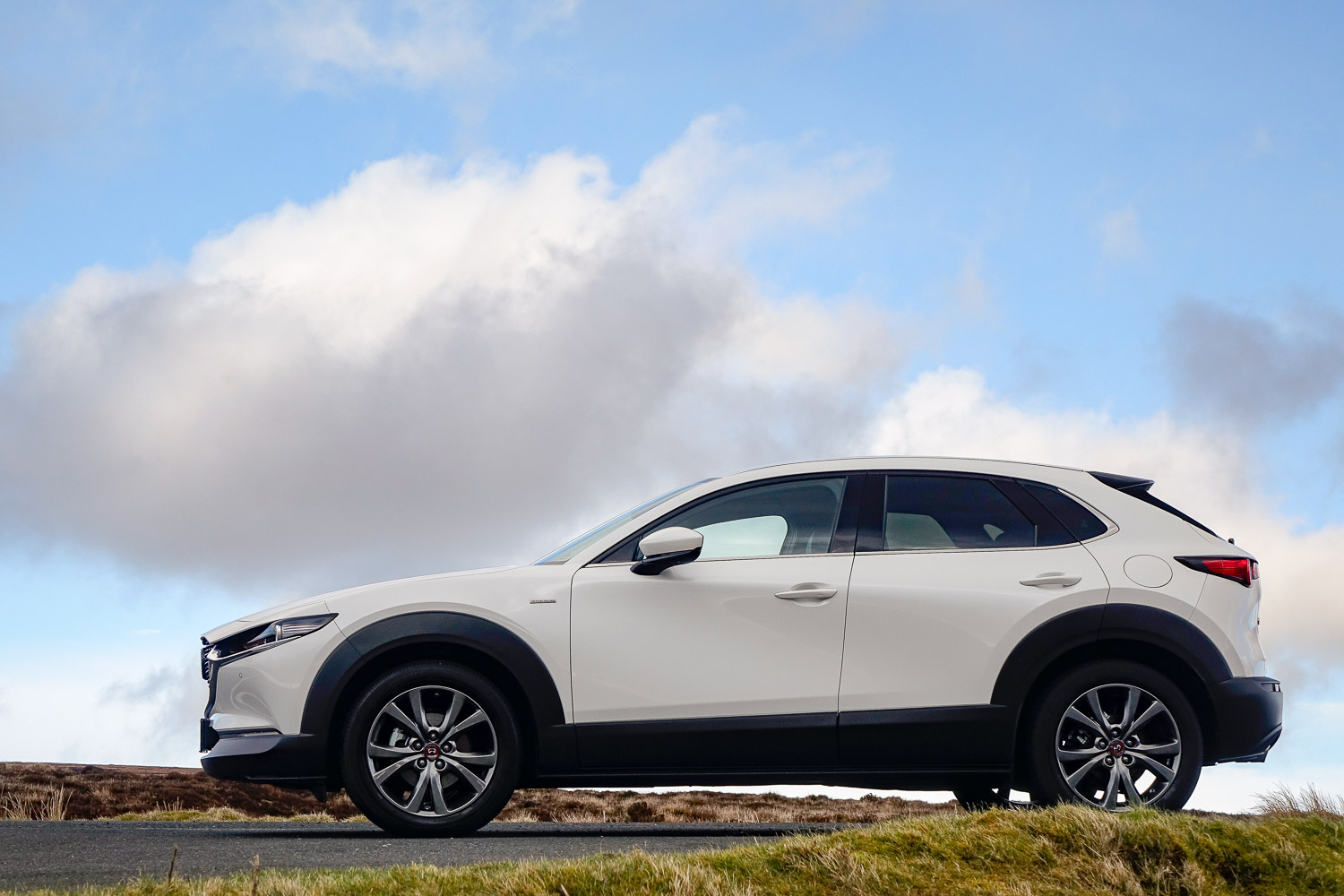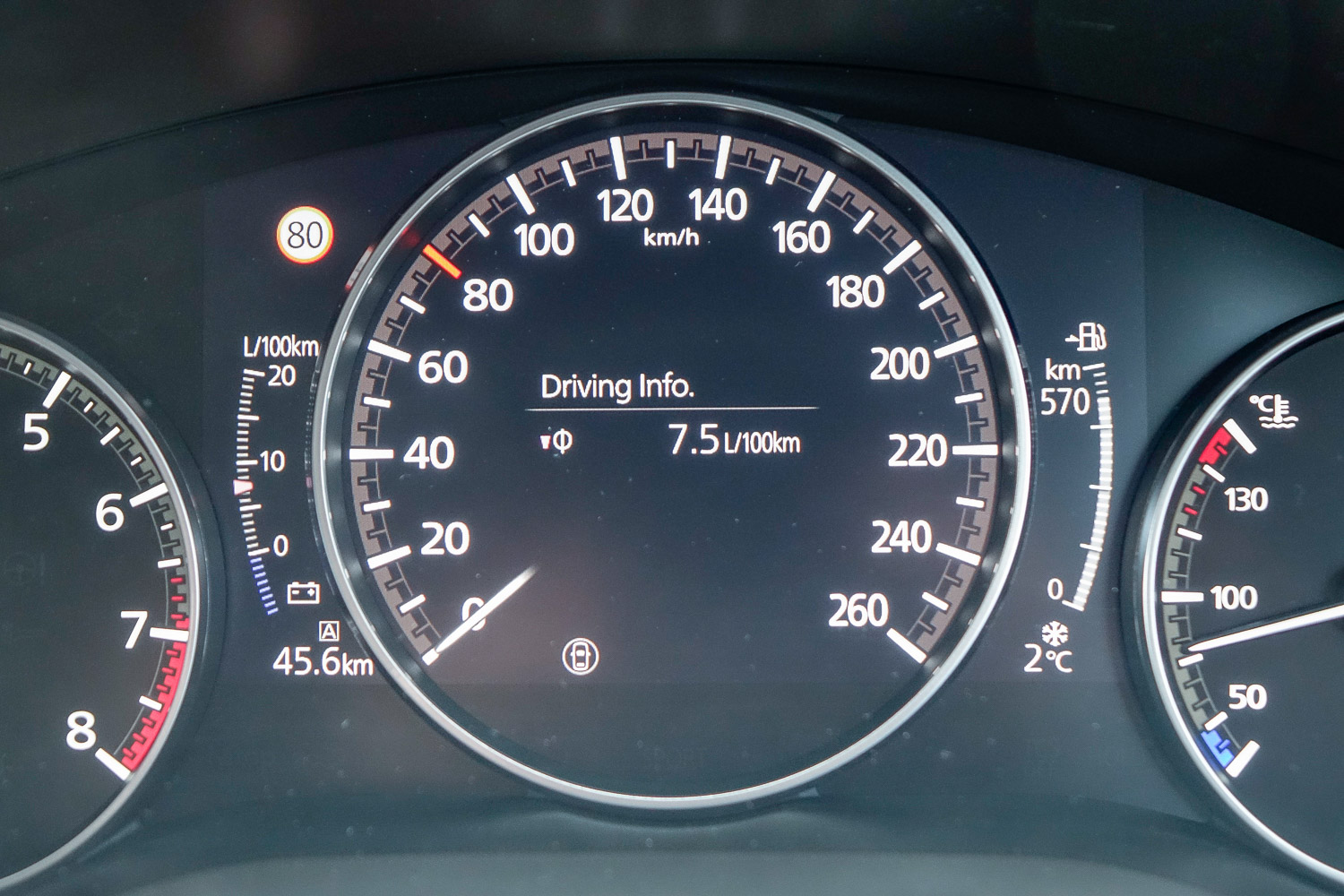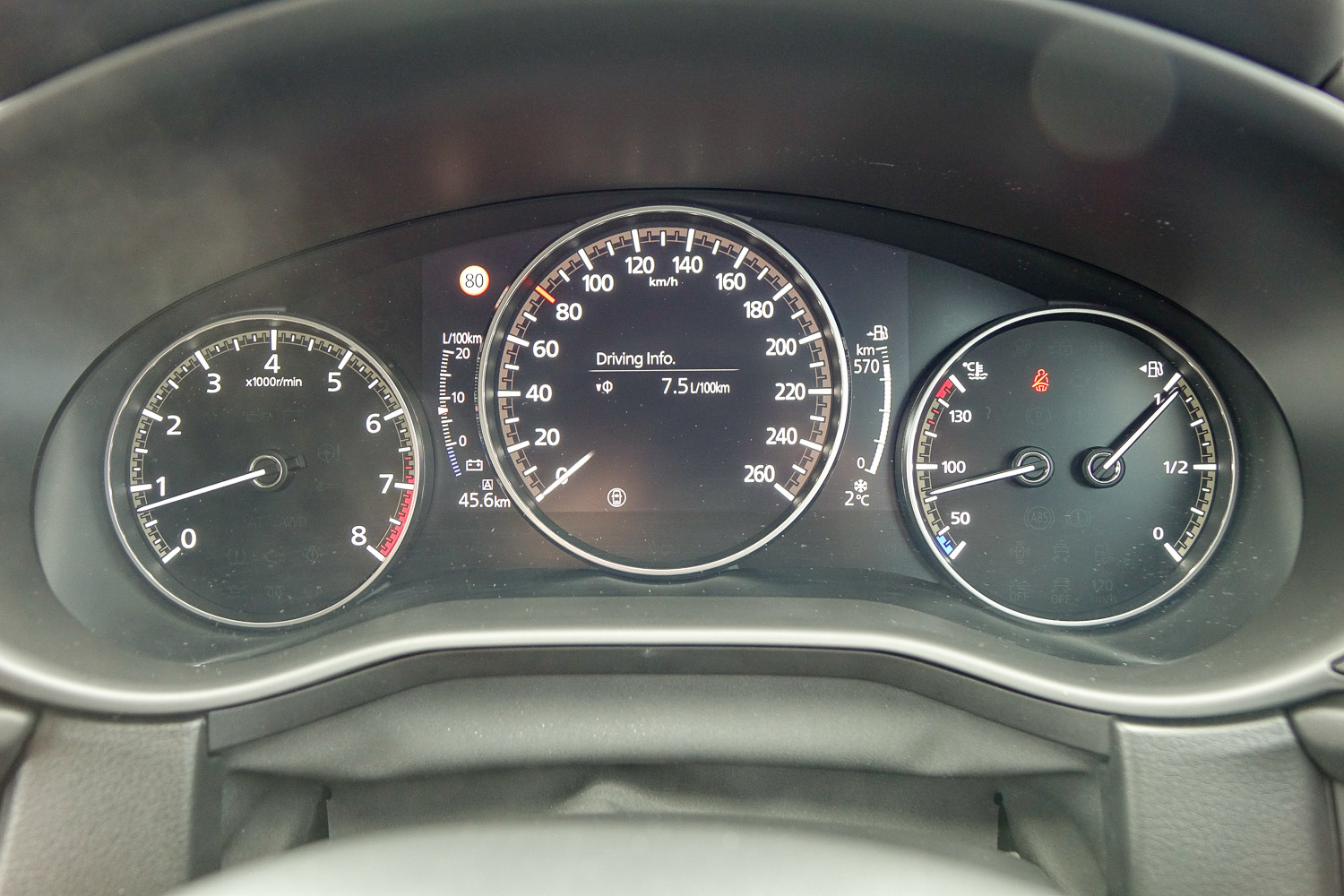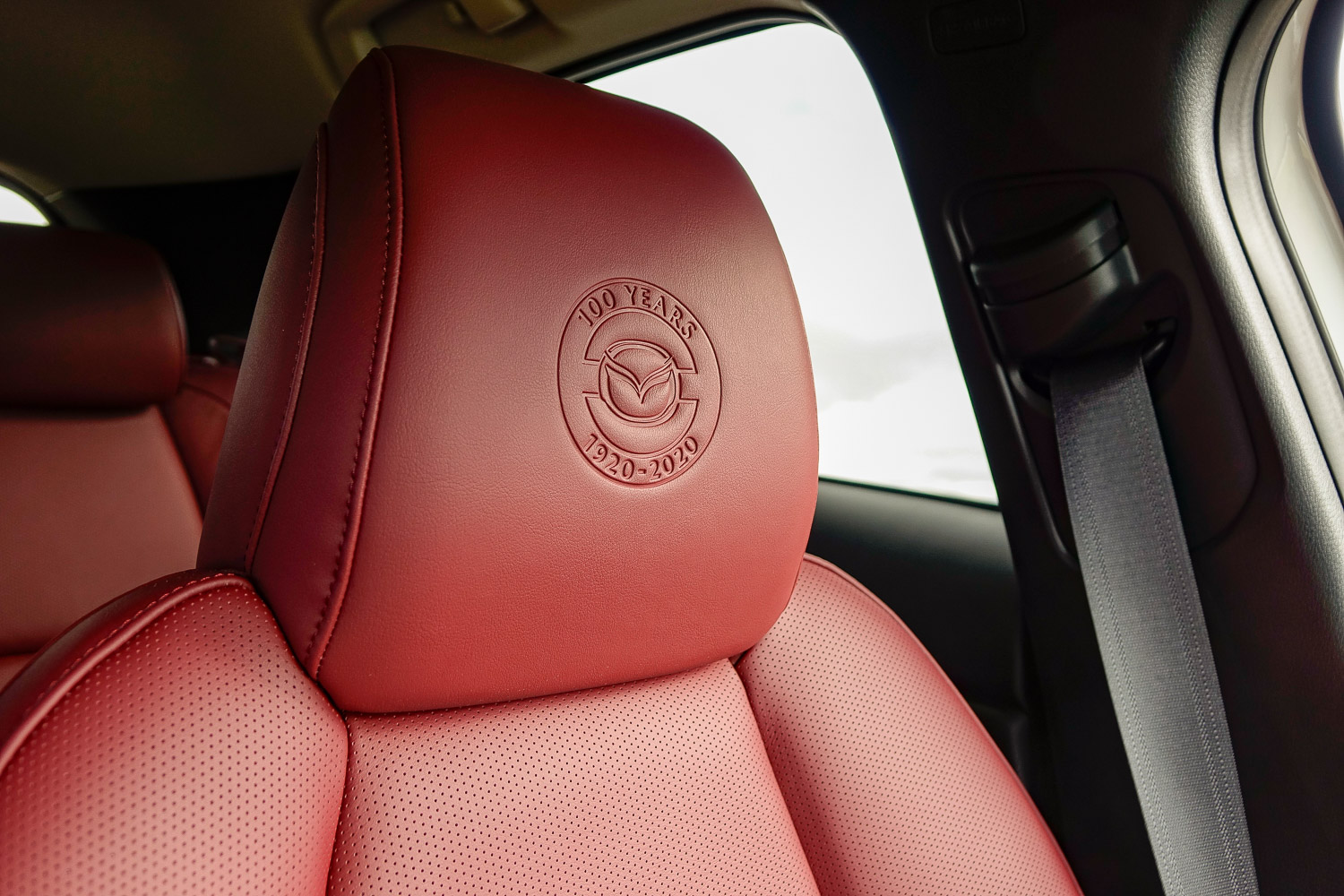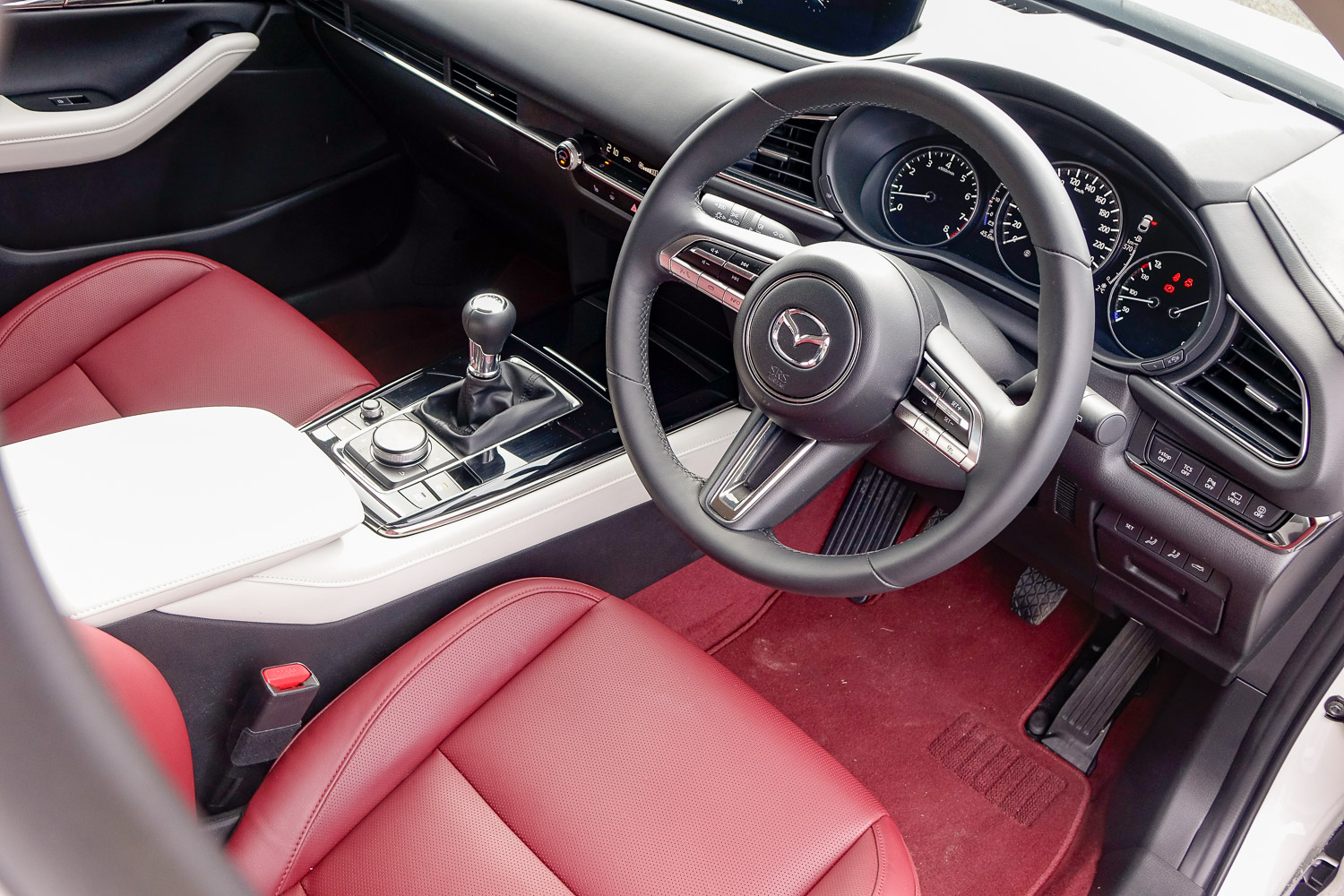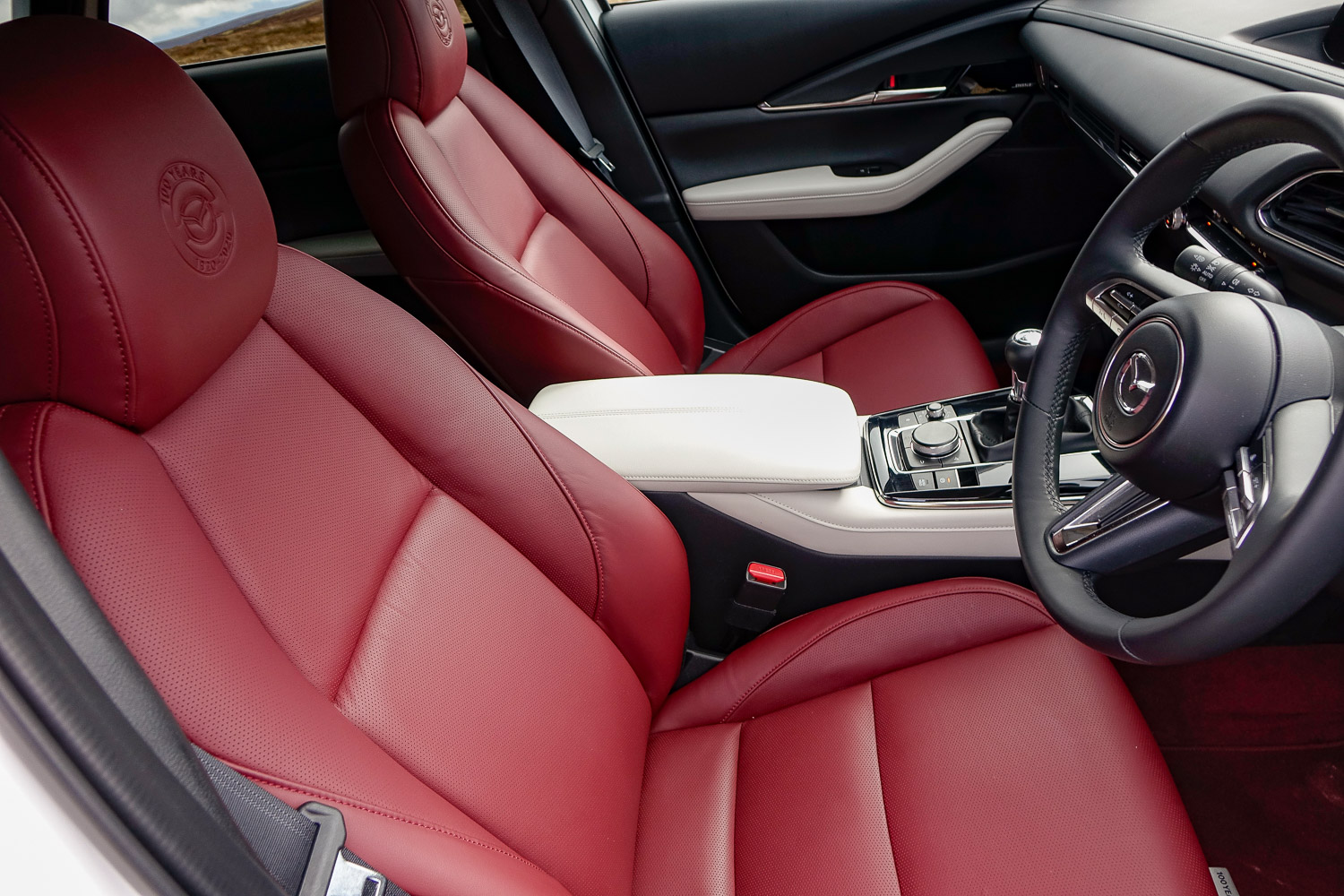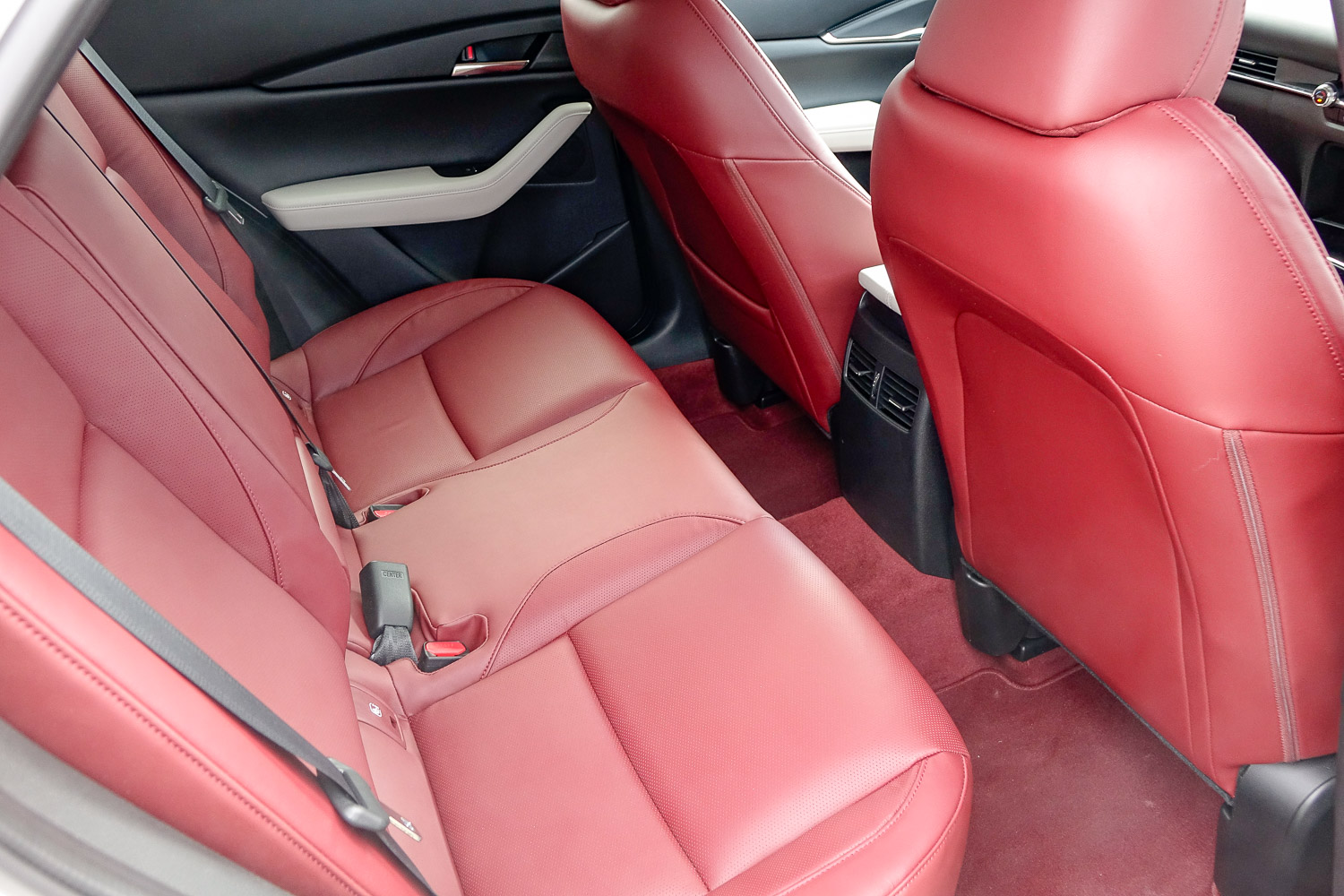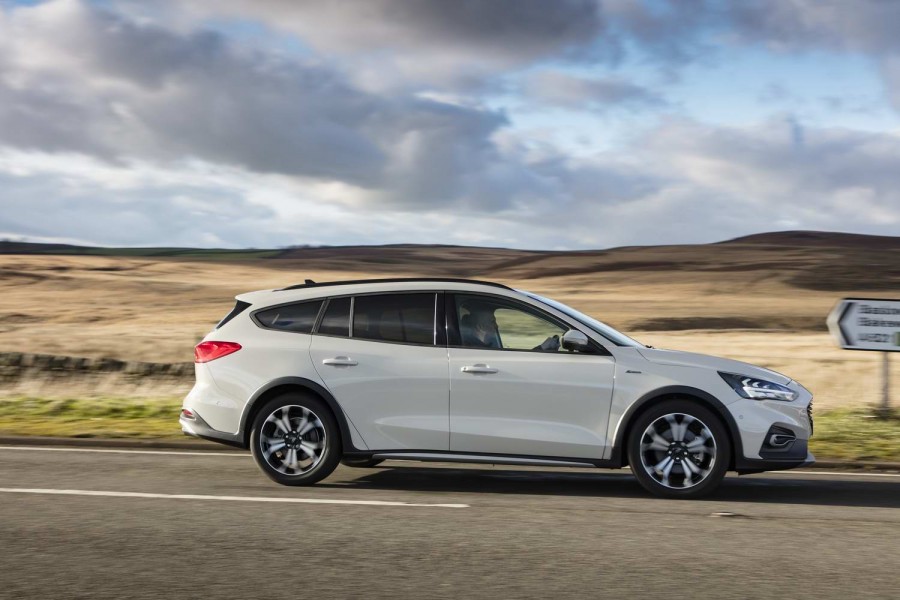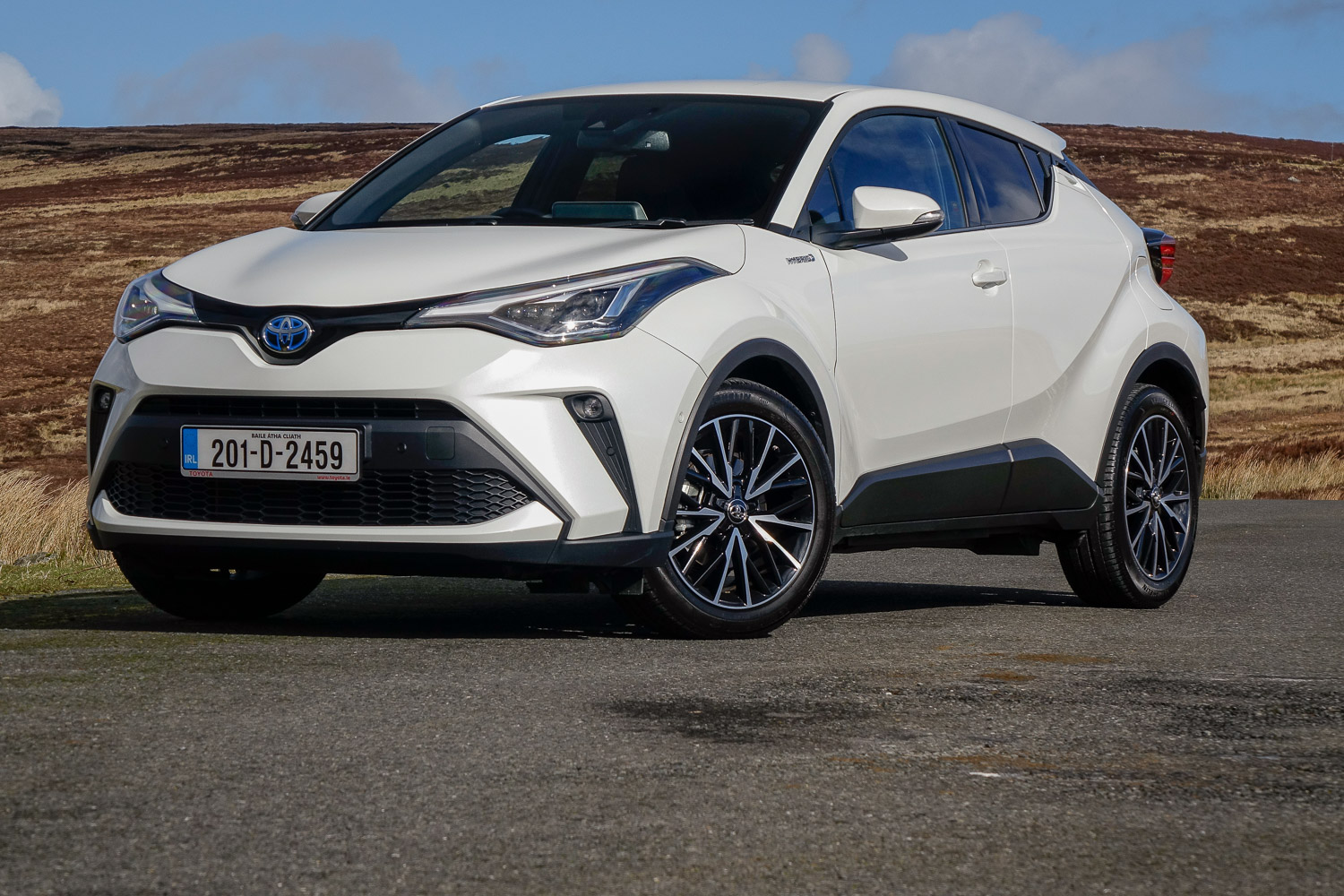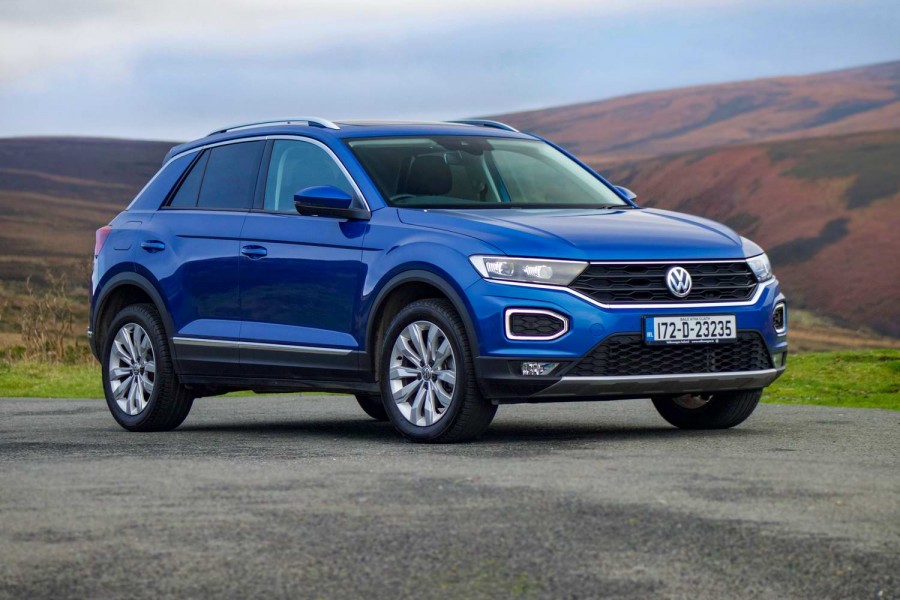What are you driving?
If you're going to have a celebration, especially right now, you may as well push the boat out a bit, right? In fact, while this special edition CX-30 celebrates Mazda's 100th birthday, actually it's a little tardy. Or we are. Mazda's centenary was actually in 2020, but something - and I can't quite remember what - prevented us from doing much in the way of celebrating last year. Still, seeing as time has no meaning anymore (WHY ARE THE DAYS ALL THE SAME!?!?!?!?!?!), it seems as appropriate to be testing this car in Mazda's 101st year as in its 100th.
The CX-30 certainly seems to scrub up well for its tuxedo moment. White paint can be a touch bland at times, but the 'Snowflake White Pearlescent Paint' looks rather lusciously lustrous. Inside, you'll find seats swathed in a deep, rich burgundy red leather. The mix of colours both nods its head to the Japanese flag and to the original Mazda passenger car - the dinky little R360, which often came in a white-red colour combo.
Other 100th Anniversary trim highlights include little plaques on the front wings that tell you what it is, special wheel-centre logos for the 18-inch alloys and the Mazda 100th logo stitched into the headrests.
Oh, but it doesn't end there - the list continues with heated front seats and steering wheel, adaptive LED headlights, active cruise control, privacy glass, 8.8-inch infotainment screen (not, thankfully, a touchscreen, but actually operated by Mazda's far more sensible rotary controller), a 12-speaker Bose stereo and an absolute pork-barrel of safety kit including lane-keeping steering, blind spot monitor and autonomous emergency braking. The CX-30 also comes with Mazda's clever G-Vectoring Control Plus, which twiddles with the engine's torque output to help point the car more eagerly into a corner.
Ah yes, the engine. It's Mazda's clever, occasionally baffling, e-Skyactiv X (it has been renamed slightly) four-cylinder 2.0-litre petrol unit, which combines a relatively high power output with theoretically diesel-like fuel economy and emissions. The science bit lies in Mazda's SPCCI - Spark Controlled Compression Ignition - which basically means that the engine squeezes and squashes the petrol-air mixture in the cylinders down tight, diesel-style, before the combustion process is completed by a tiny spark from a spark plug.
We drove this engine for the first time just 18 months ago, but Mazda being Mazda, the company has already made some improvements. Power increases by 6hp to 186hp, while the slightly scrawny torque figure has been bolstered by a useful 16Nm, bringing the total to 240Nm. Impressively, in spite of the increased performance, the CX-30's WLTP fuel consumption has been trimmed to 5.7 litres per 100km (down by 0.2 litres per 100km) and its CO2 figure has also fallen, by 5g/km, to 128g/km - which will save you a whole €10 a year on your tax (every little, etcetera...).
Name its best bits
The thing I love most about the CX-30 is just how smooth it is to drive. Mazda's engineers have clearly been working hard on this e-Skyactiv engine as, not only have the power, torque and emissions figures improved, but so too has refinement. It can be difficult to know that the engine is actually running, and the occasional faint diesel-y noise that you used to be able to hear at low speeds seems to have disappeared completely.
The engine combines rather beautifully with a six-speed manual gearbox, which is so easy and pleasant to use that frankly it makes a mockery of going for the automatic option. The shift is light and, if it's a little longer in the fore-aft throw than you expect at first, then it's also wonderfully accurate and analogue-mechanical in feel. You can tell that enthusiasts have worked on this car.
The improvements to engine power, and more importantly torque, are also noticeable. True, you'd need a magnifying glass and a team of bloodhounds to actually find that extra 16Nm, and you have to remember that peak torque is developed at 4,000rpm, which is far higher than the diesels and turbocharged petrol engines we're all used to. However, work the gearshift and bring the revs up a bit more than you normally would, and the CX-30 definitely feels a little more fleet of foot through the mid-range, and it's less likely to get bogged down in a higher gear.
The mild-hybrid system must come in for some praise too, as, while it can be difficult to detect just how much it's helping in terms of acceleration, it has the best stop-start system you'll ever find. The pistons of the engine are carefully stopped just before their point of combustion when you are waiting at traffic lights, and the system restarts so quickly that you can actually have the car in gear, and your foot on the clutch when stopped. The engine fires as you move your foot from the brake to the throttle, and it's so quick we never once caught it out.
The CX-30's handling is also sweet - not pin-sharp, perhaps, but there's a tautness and a tightness to the controls that inspires immediate confidence, and you can find yourself swinging through a series of corners with far more verve than you would do in most rival products. Steering feedback could be a little better, but the overall feel and weight are about spot on, and the CX-30's body control, grip and balance are hugely confidence inspiring.
While we're on the good list, check out that interior. OK, so the CX-30 lacks the whizz-bang all-digital instruments of some rivals, but the part-analogue dials are nevertheless clear and easy to use, and anyway, you tend to use the head-up display, projected onto the windscreen, instead. Cabin quality is exceptional, so the extra layers of leather and trim brought on board by the 100th Anniversary model feel more appropriate than they might in some other products. The seats are excellent, and that burgundy leather is just wonderfully soft.
Space in the back and boot are only just about acceptable by class standards, but on the whole the CX-30 seems practical enough in daily use. There's a neat reversible boot floor, which has luxurious carpet on one side and a hard-wearing fabric on the other, complete with a fold-out panel to protect the top of the rear bumper. That's a neat touch, and so too is the fact that there's a dedicated storage space for the rear parcel shelf under the boot floor.
Anything that bugs you?
Fuel economy is still an issue, and once again we've struggled to get the e-Skyactiv X engine to deliver anywhere near its official figure. Against Mazda's 5.7 litres per 100km, we more often scored more like 6.5 litres per 100km, which is OK, but not great when the whole point of the engine is to deliver superior economy. We have heard that e-Skyactiv X engines improve markedly in economy terms as the kilometres accumulate and the engine loosens up, so we're prepared to give it a small benefit of the doubt, here.
The CX-30's ride quality isn't great either - it's OK, but the fact that the springs and dampers have to be stiffer (compared to the Mazda3 hatchback with which the CX-30 shares so much DNA) to cope with the heavier body and extra ride height just shows you what a compromise SUVs and crossovers are, from an engineering sense.
And why have you given it this rating?
At some point we're going to have to try and test an e-Skyactiv X engine with higher miles on it, to see if it can really, truly, live up to its economical billing. That aside, and sticking a pin in the 100th Anniversary edition's relatively high price for now, the CX-30 remains a hugely appealing car. Its hatchback-like shape means you draw less ire from other road users, it's delightful to drive, handsome, beautifully built, likely reliable and exceptionally refined. What's not to like?
What do the rest of the team think?
The CX-30 has been a likeable crossover from the start, but it really is worth remembering that this is closer to car than 4x4 in character, and that applies to its driving position, too. I.e. if you're looking for a crossover with a commanding view of the road ahead, this is not it. If that's of little importance to you, you'll discover that the CX-30 drives in an appealing manner, with more enthusiasm and ability than most options in the class. Despite the considerable effort gone into the engineering of the e-Skyactiv X engine, however, I can't get excited about it. Sure, it's quiet, but its economy is only average, and it requires serious revving to get its full performance, or even to get adequate performance at times. In terms of the 100th anniversary trinkets, I love the leather upholstery, but could do without the rest of it, and I wonder how many buyers of crossovers of this size really care how old a car company is. Still, the CX-30's cabin is of high quality, even if there's nothing class-leading about rear-seat and boot space. In short, this car makes for an interesting alternative to the Mazda3, but not at the near-€40,000 asking price of our test car.
Shane O' Donoghue - Editor

